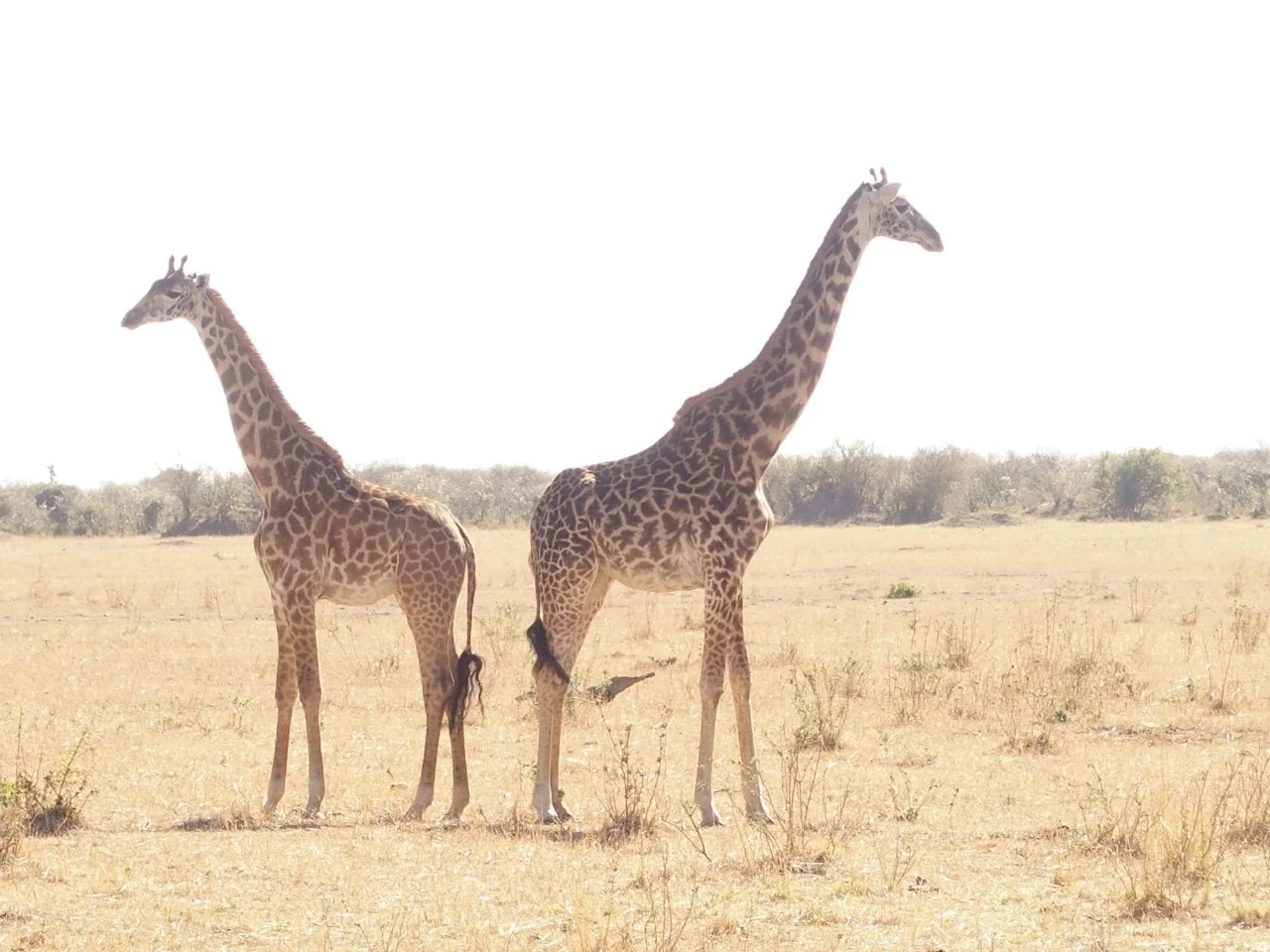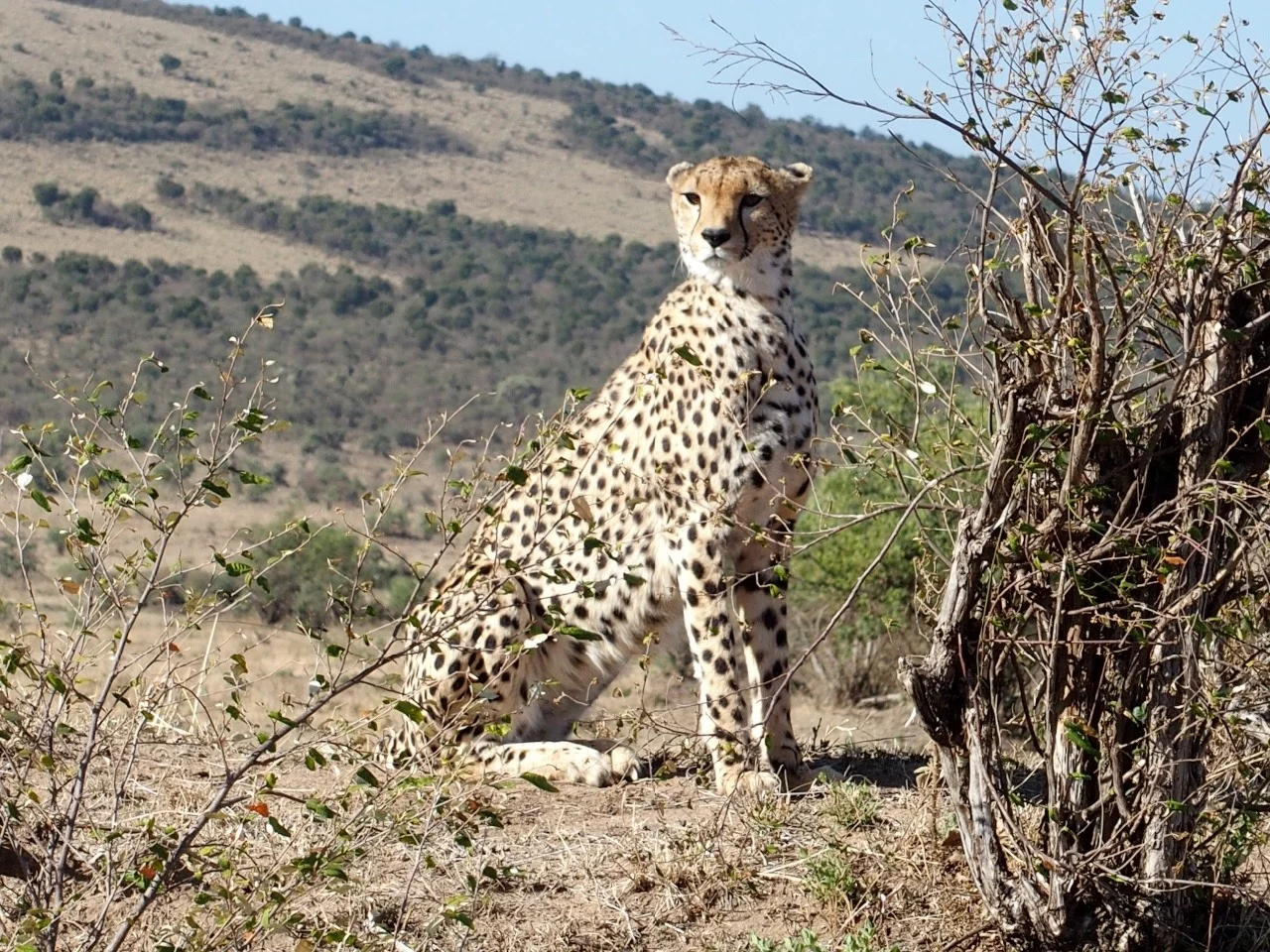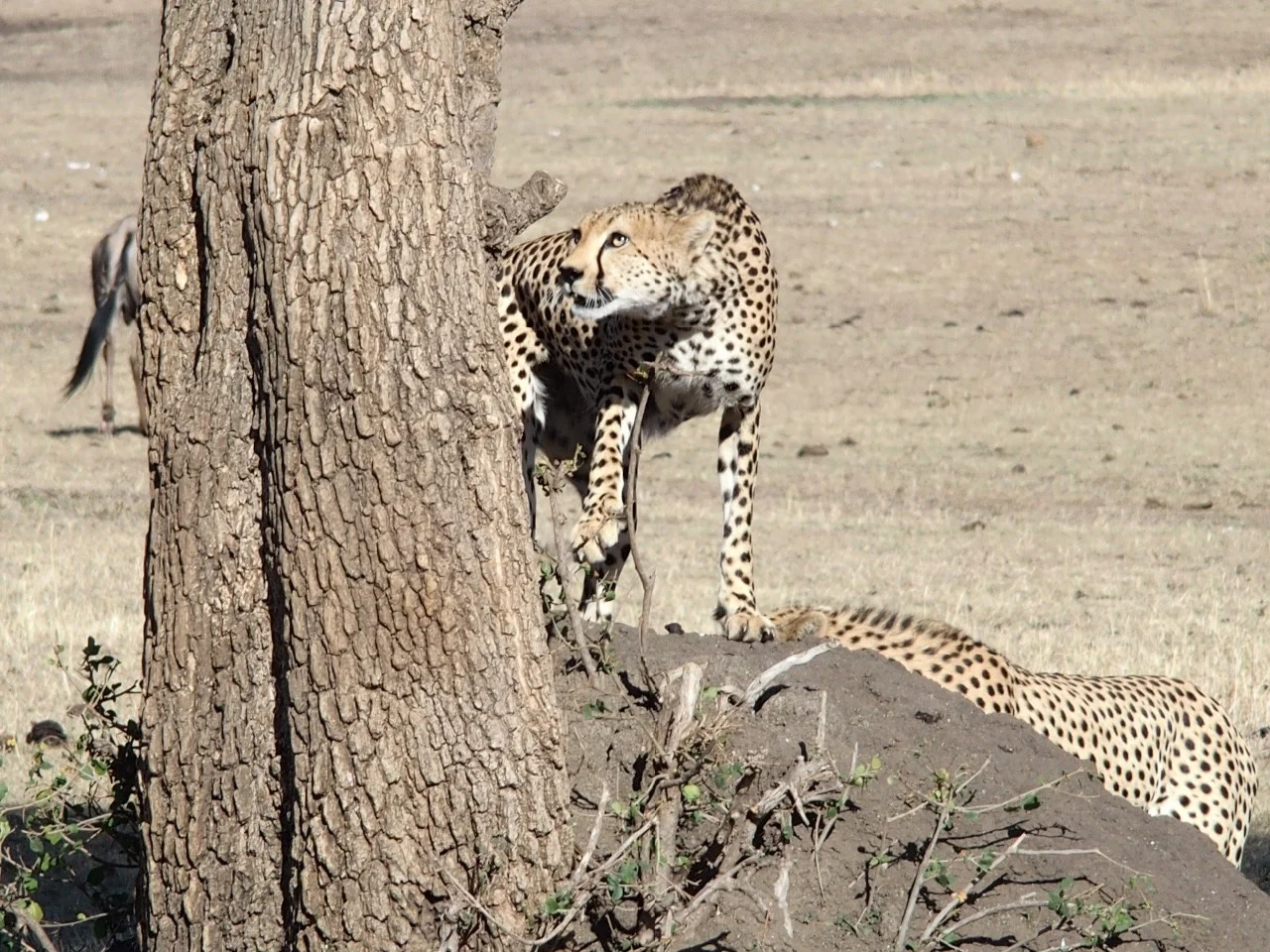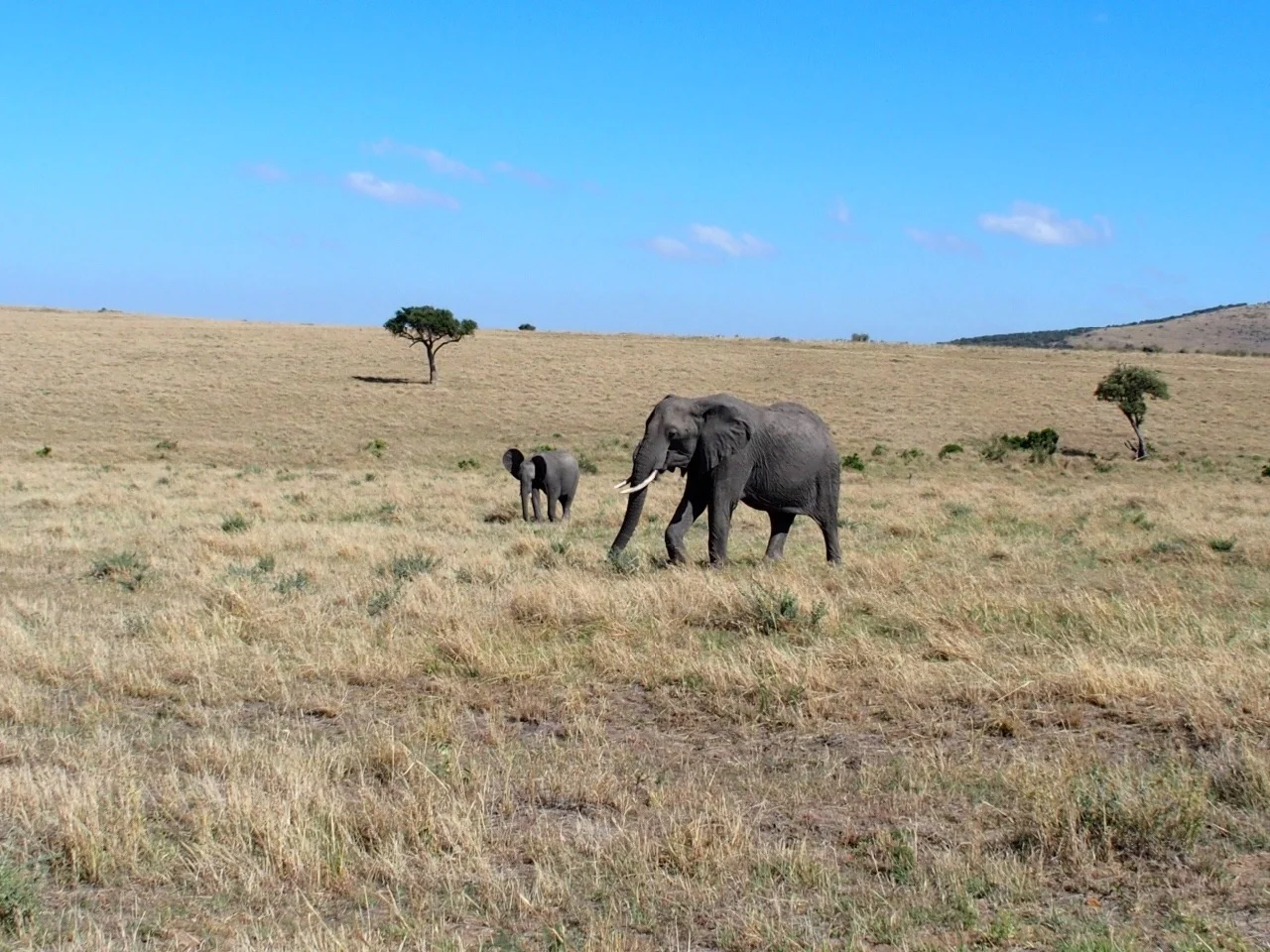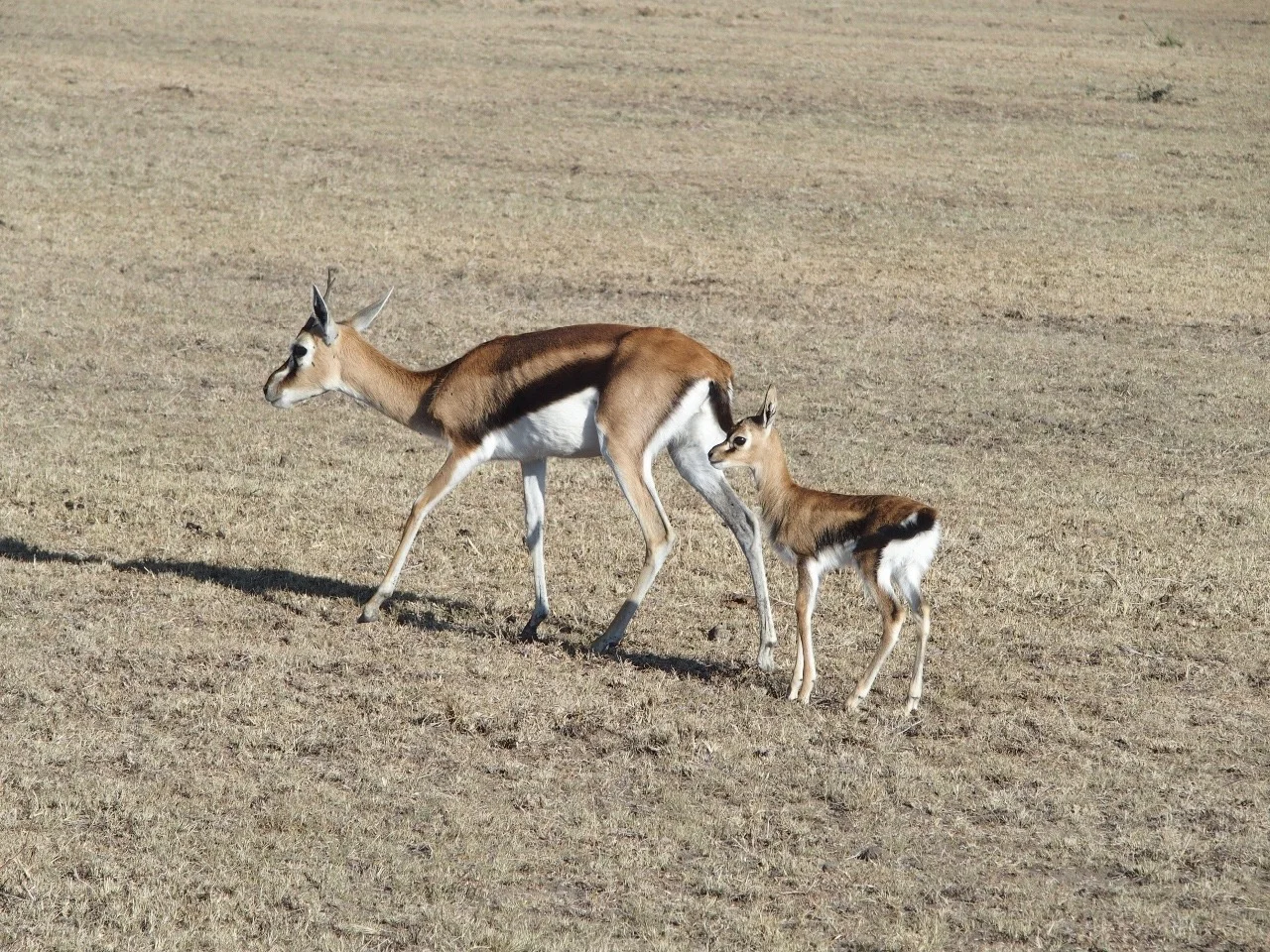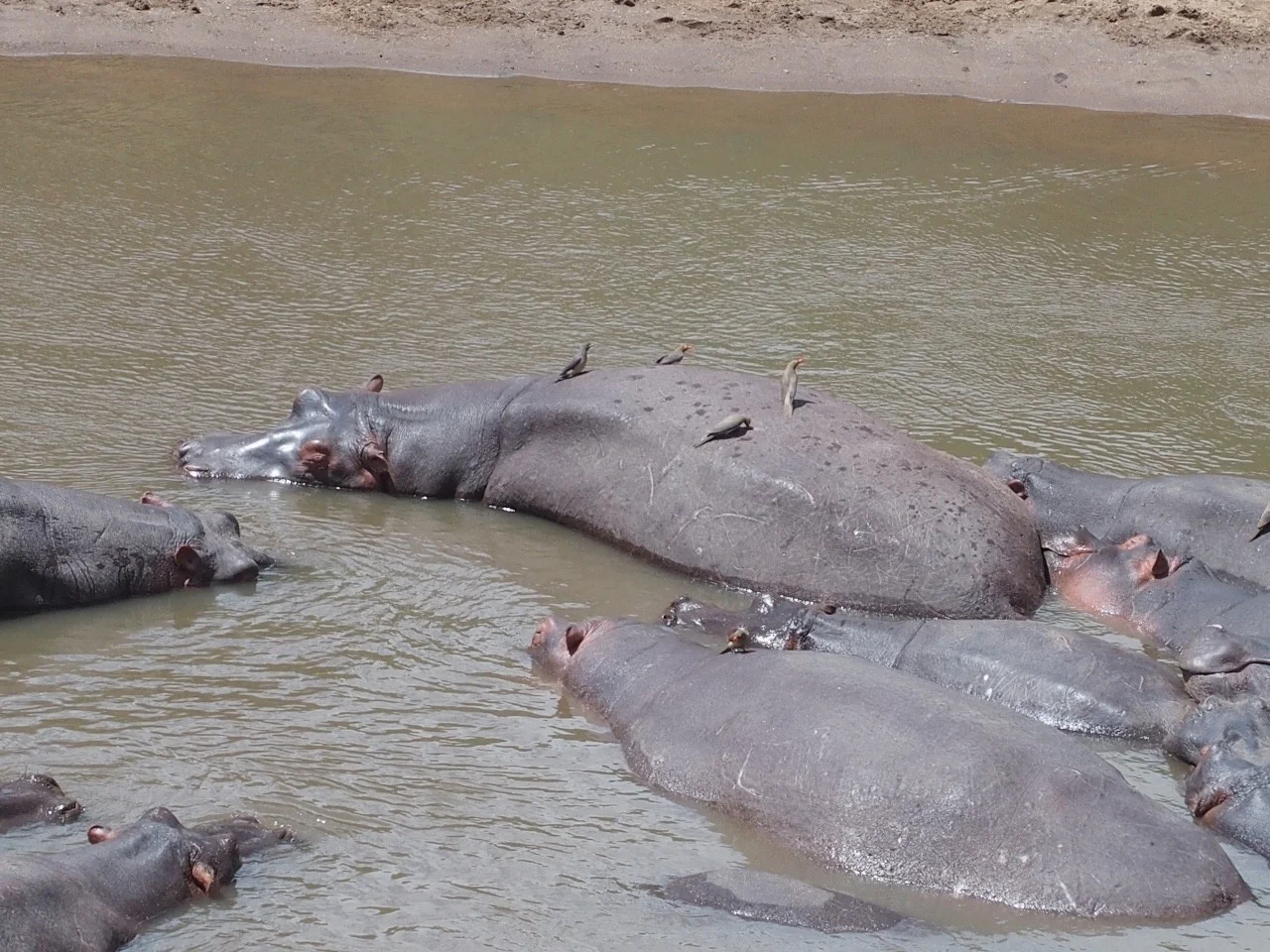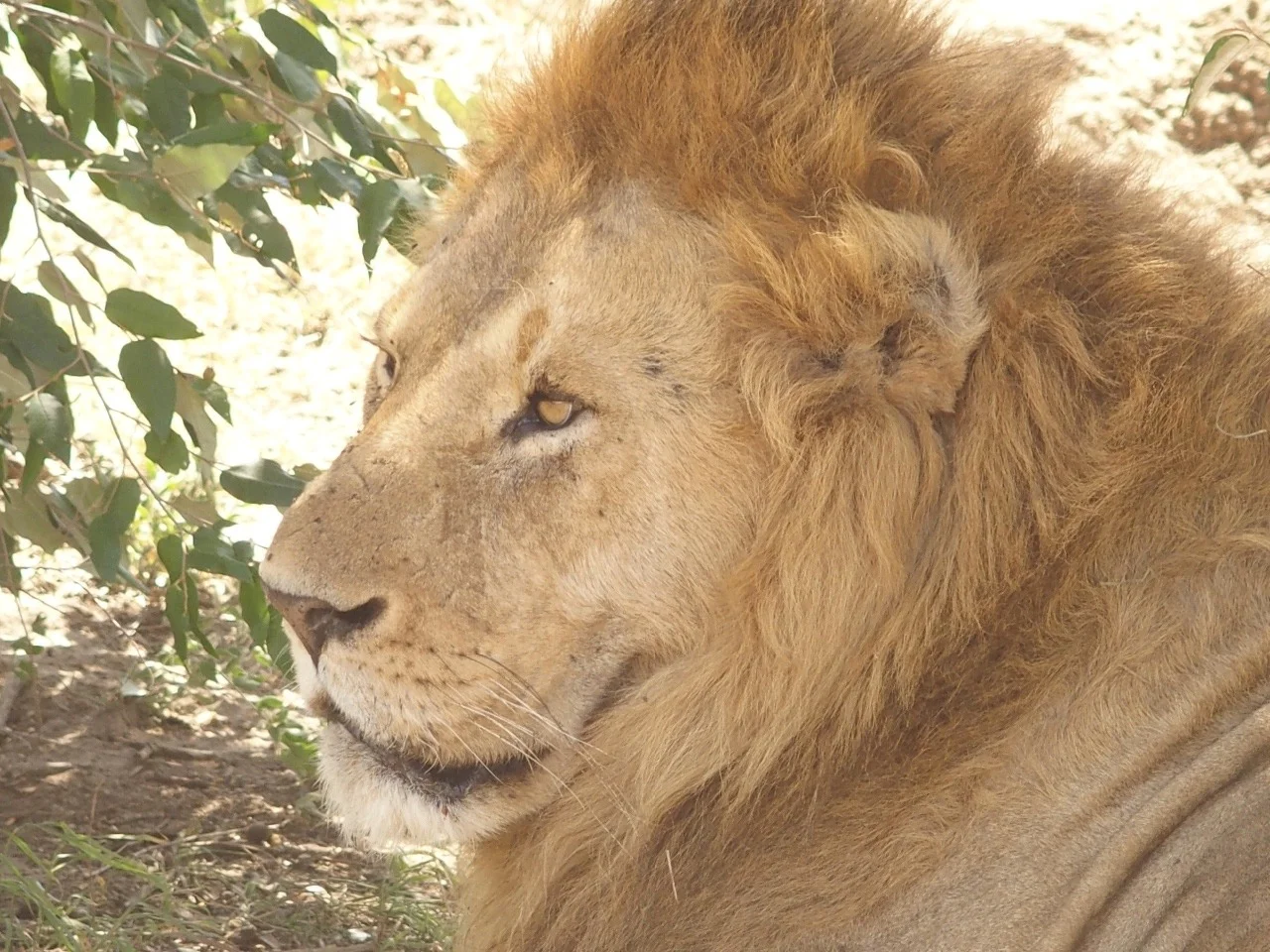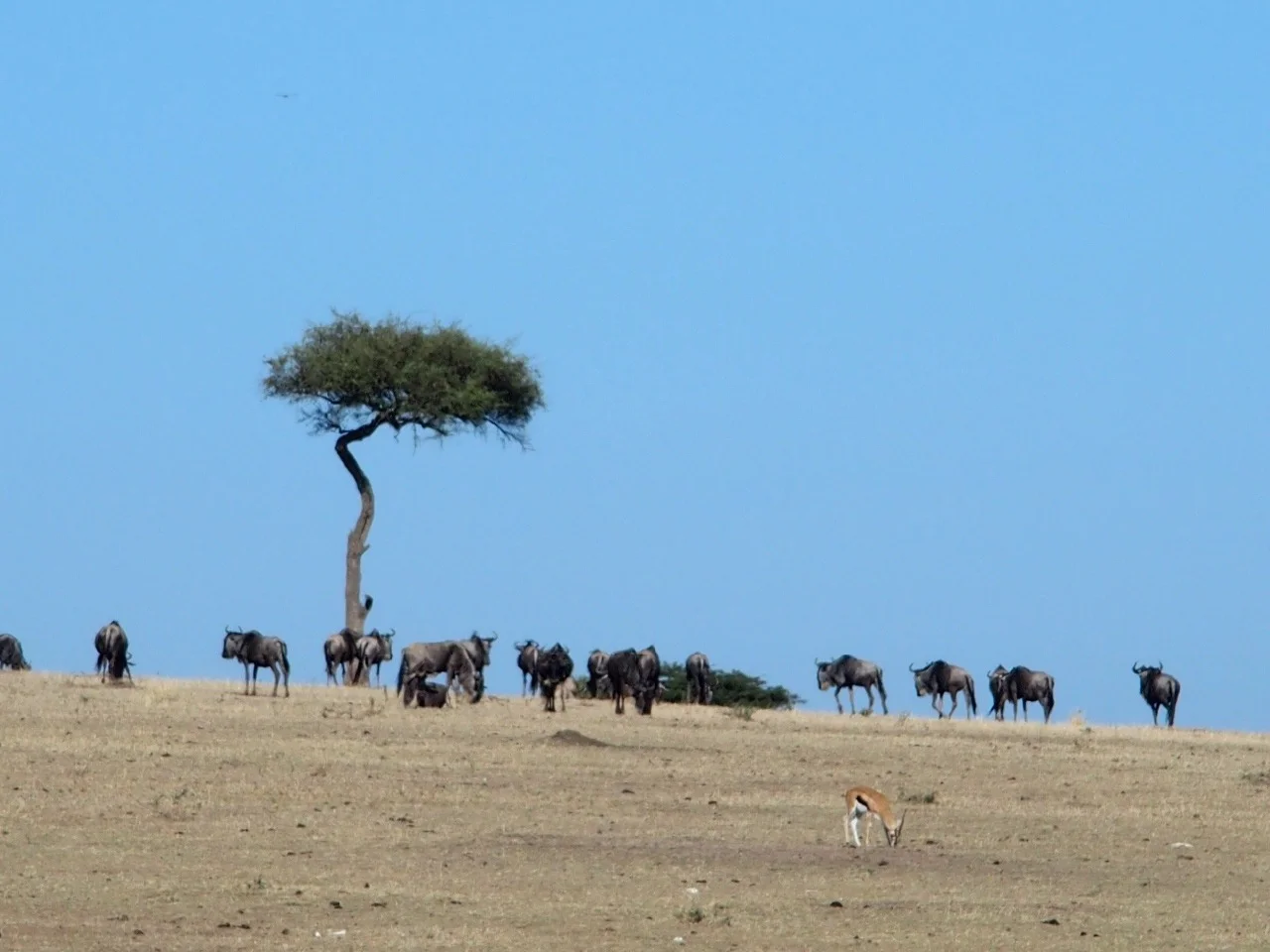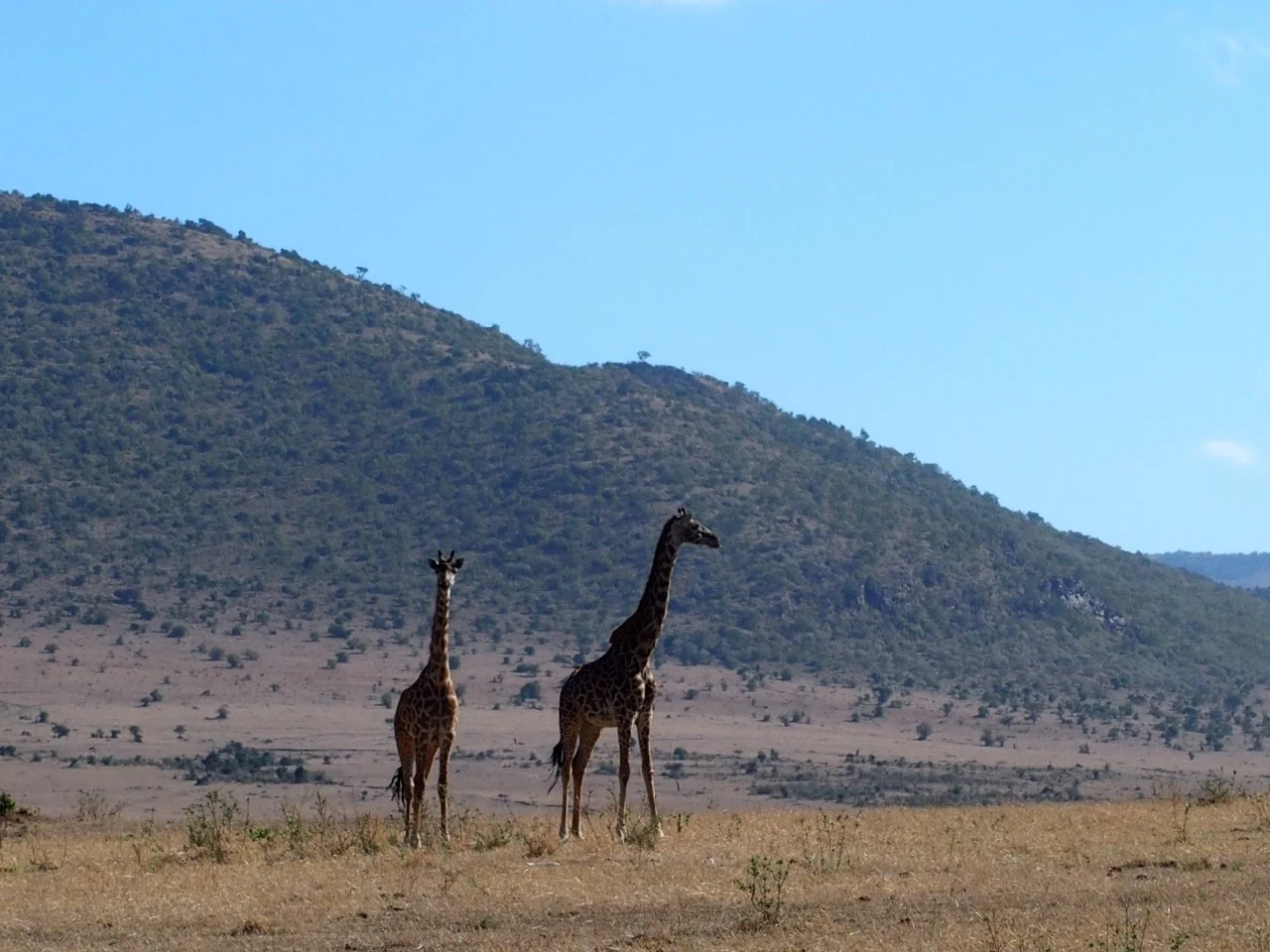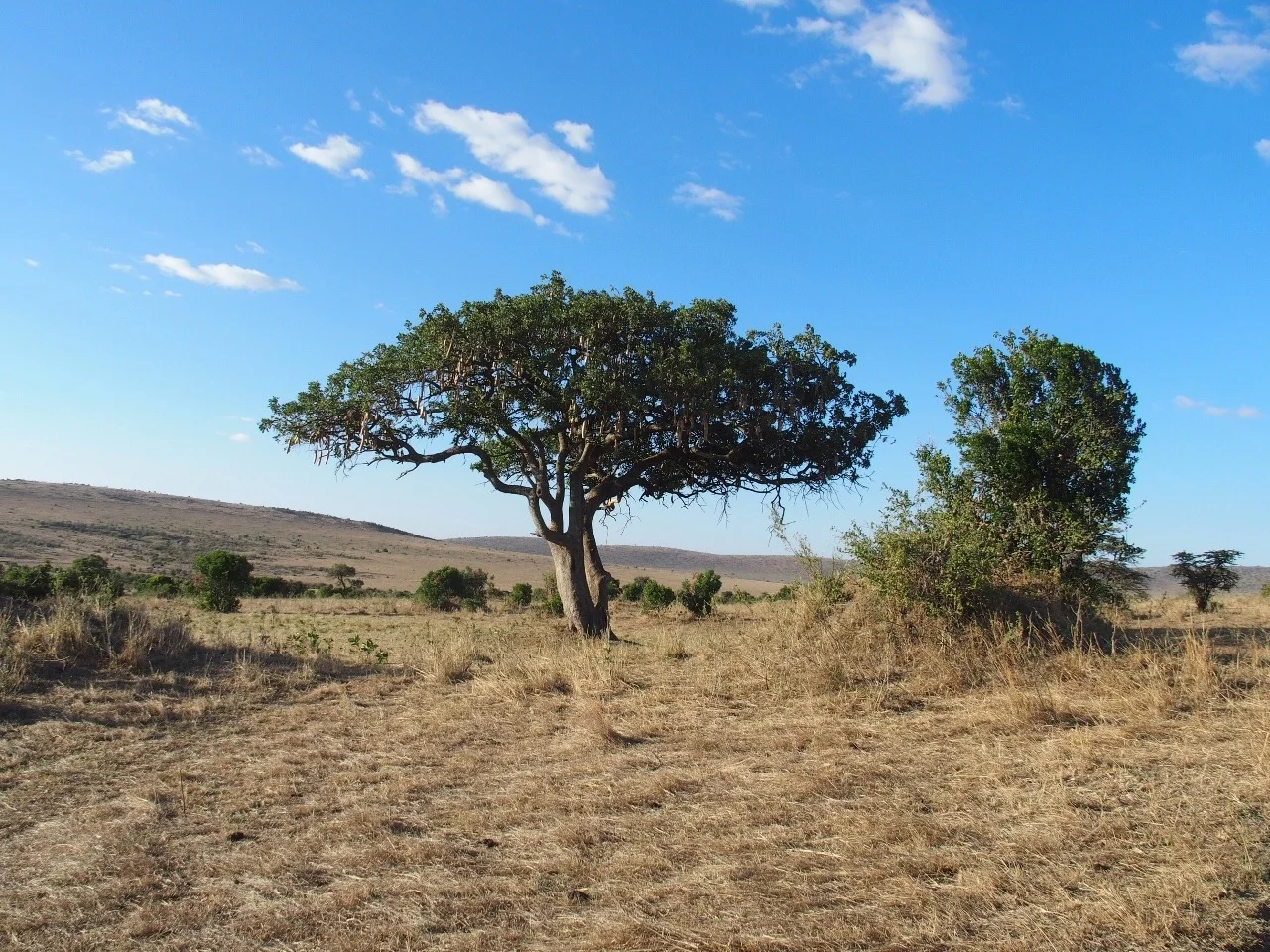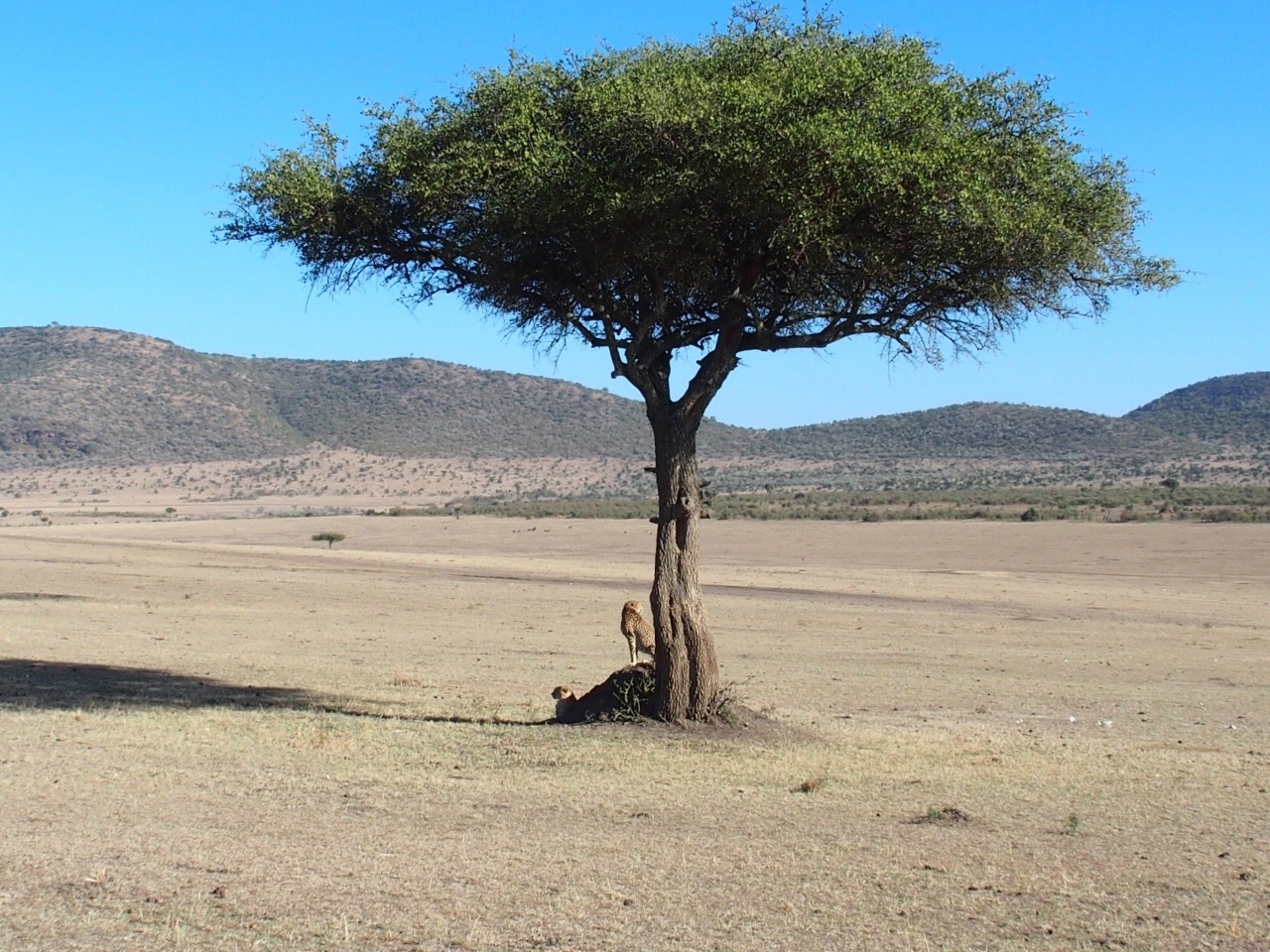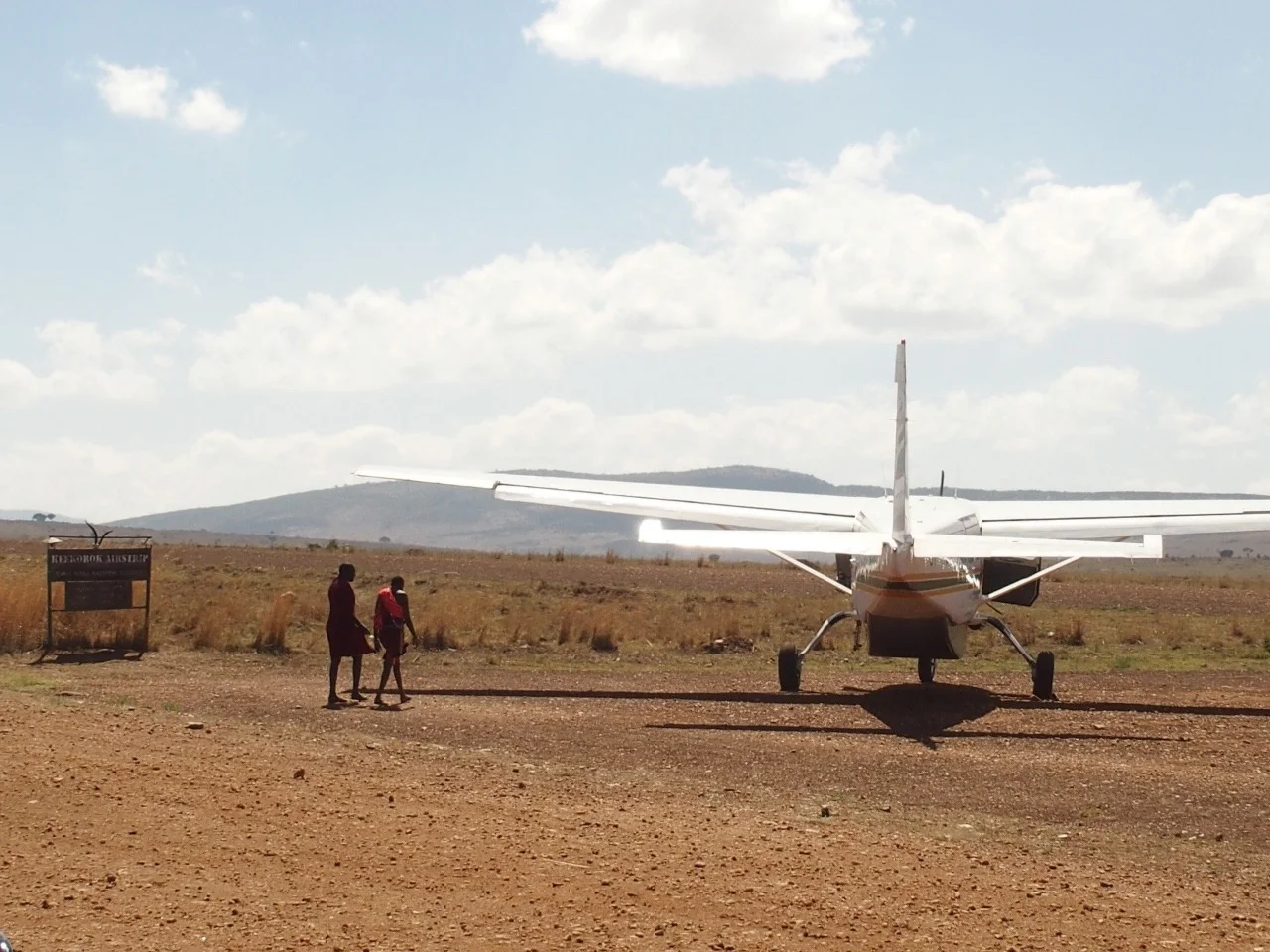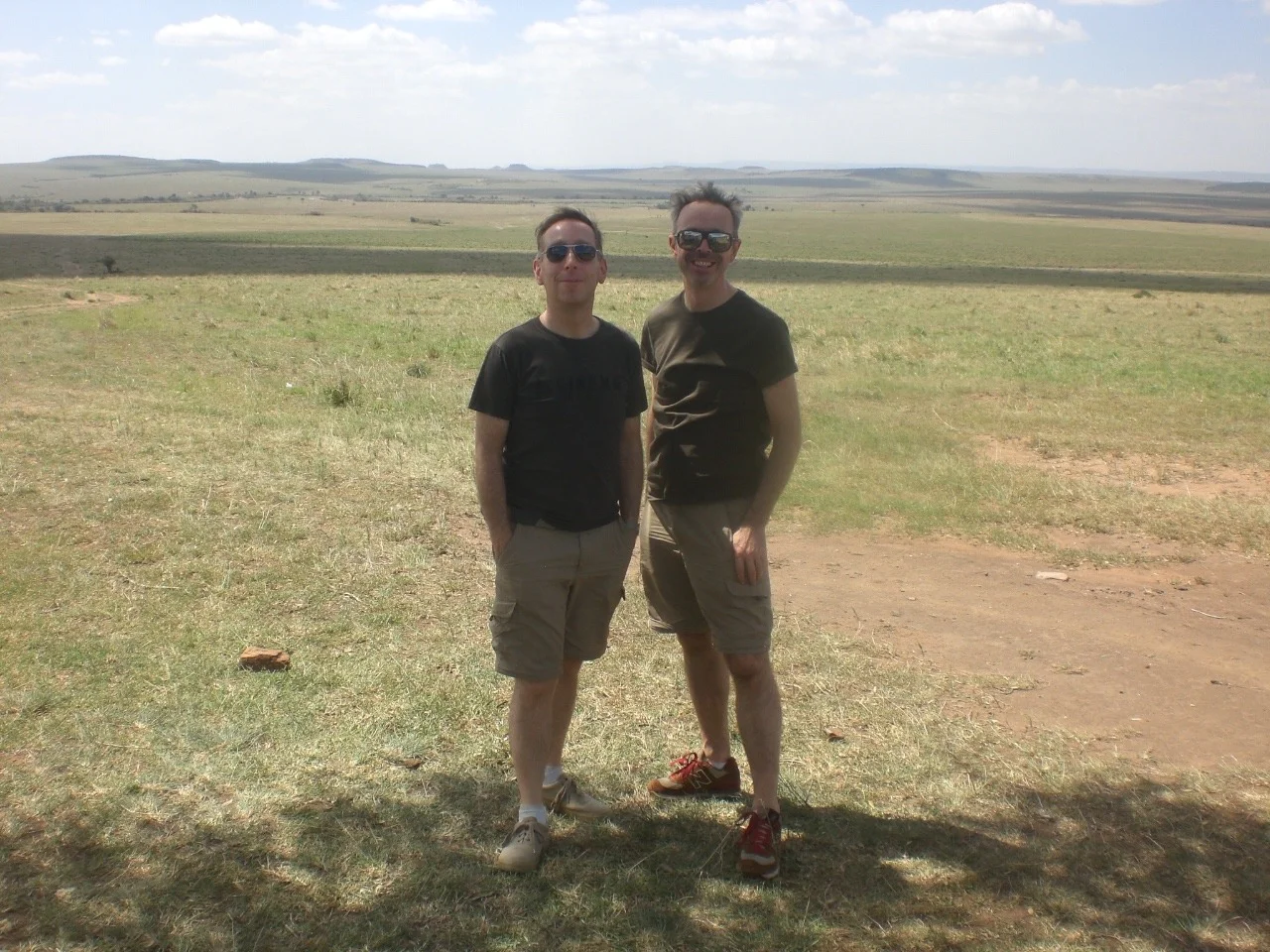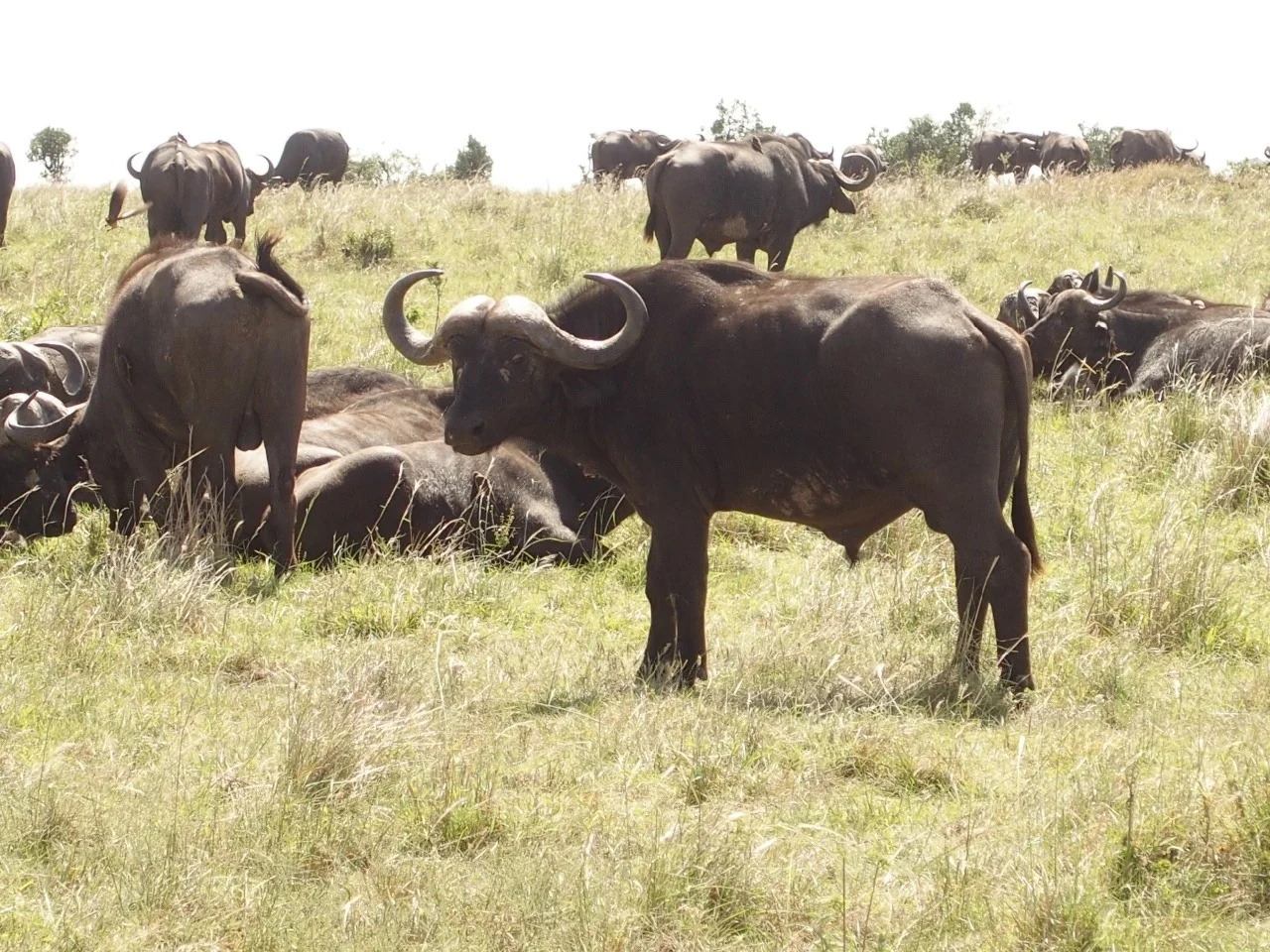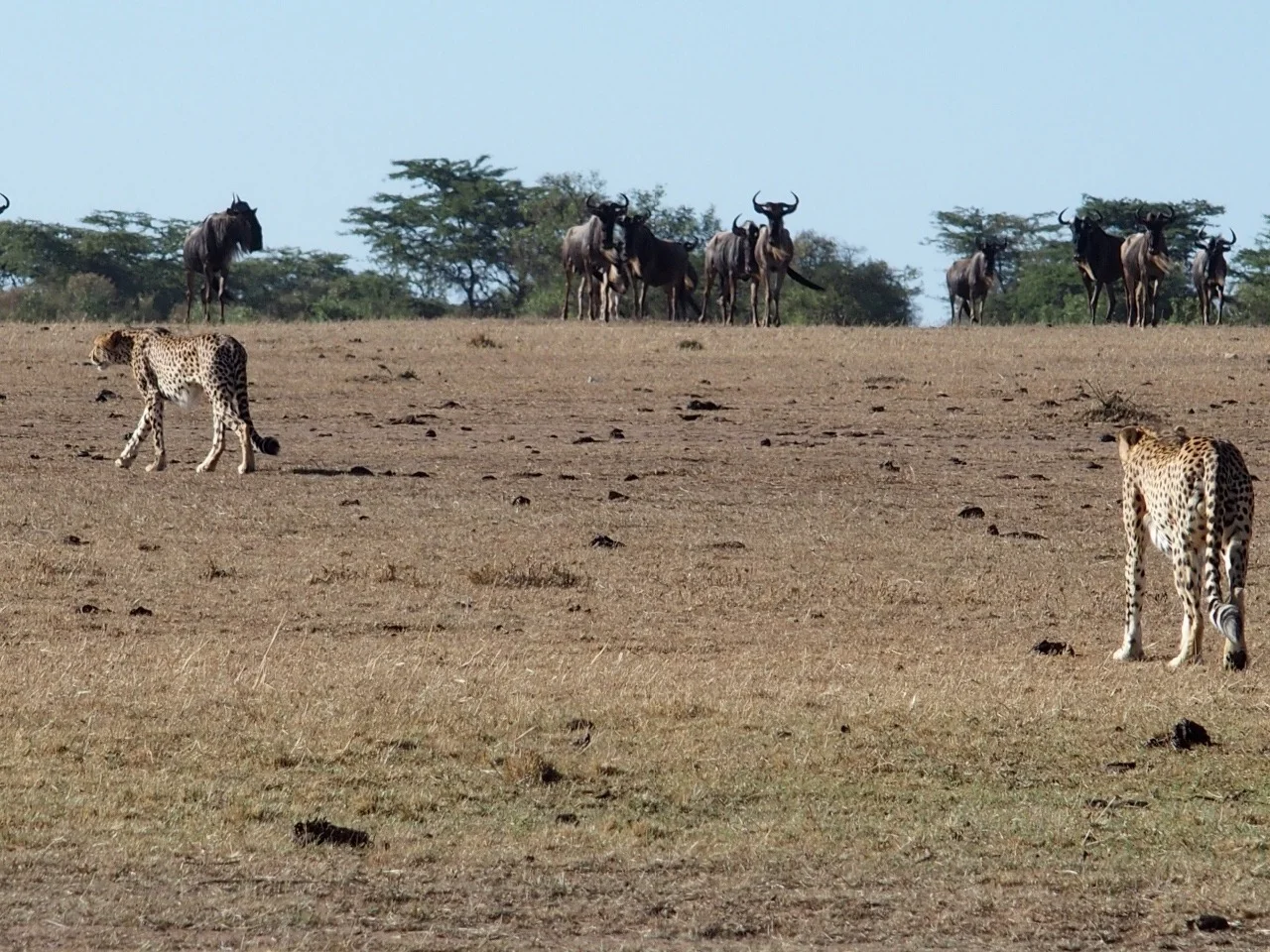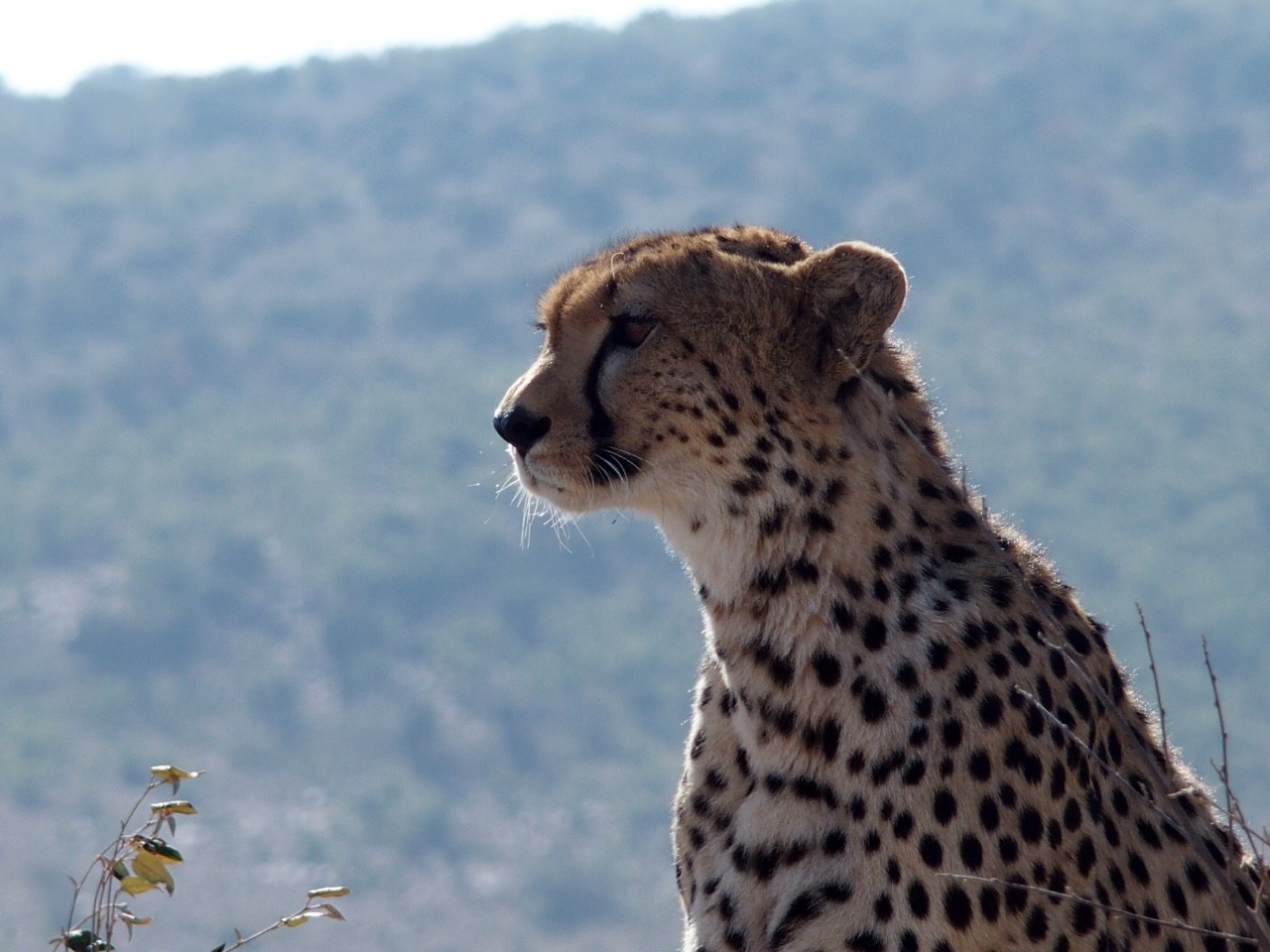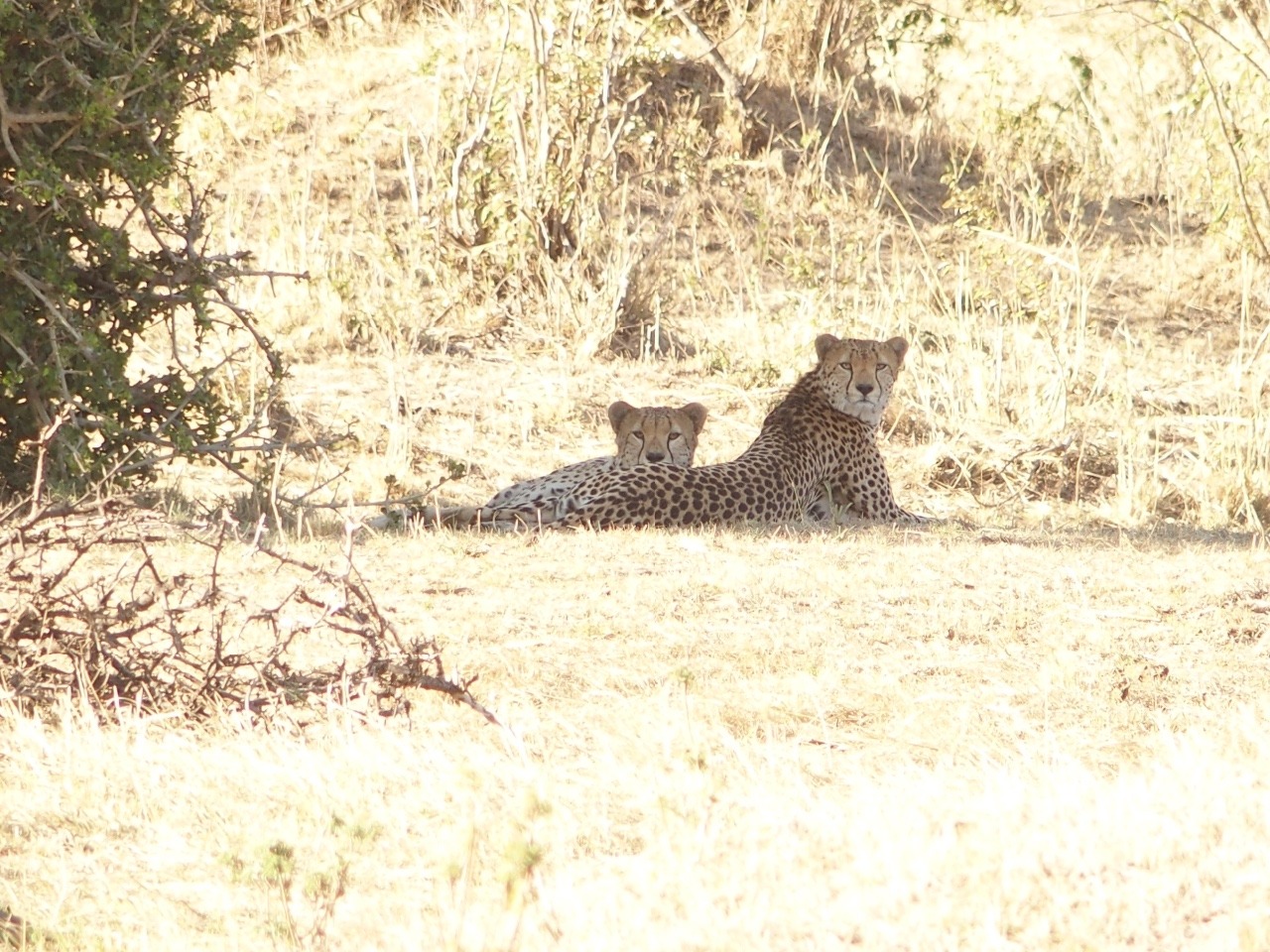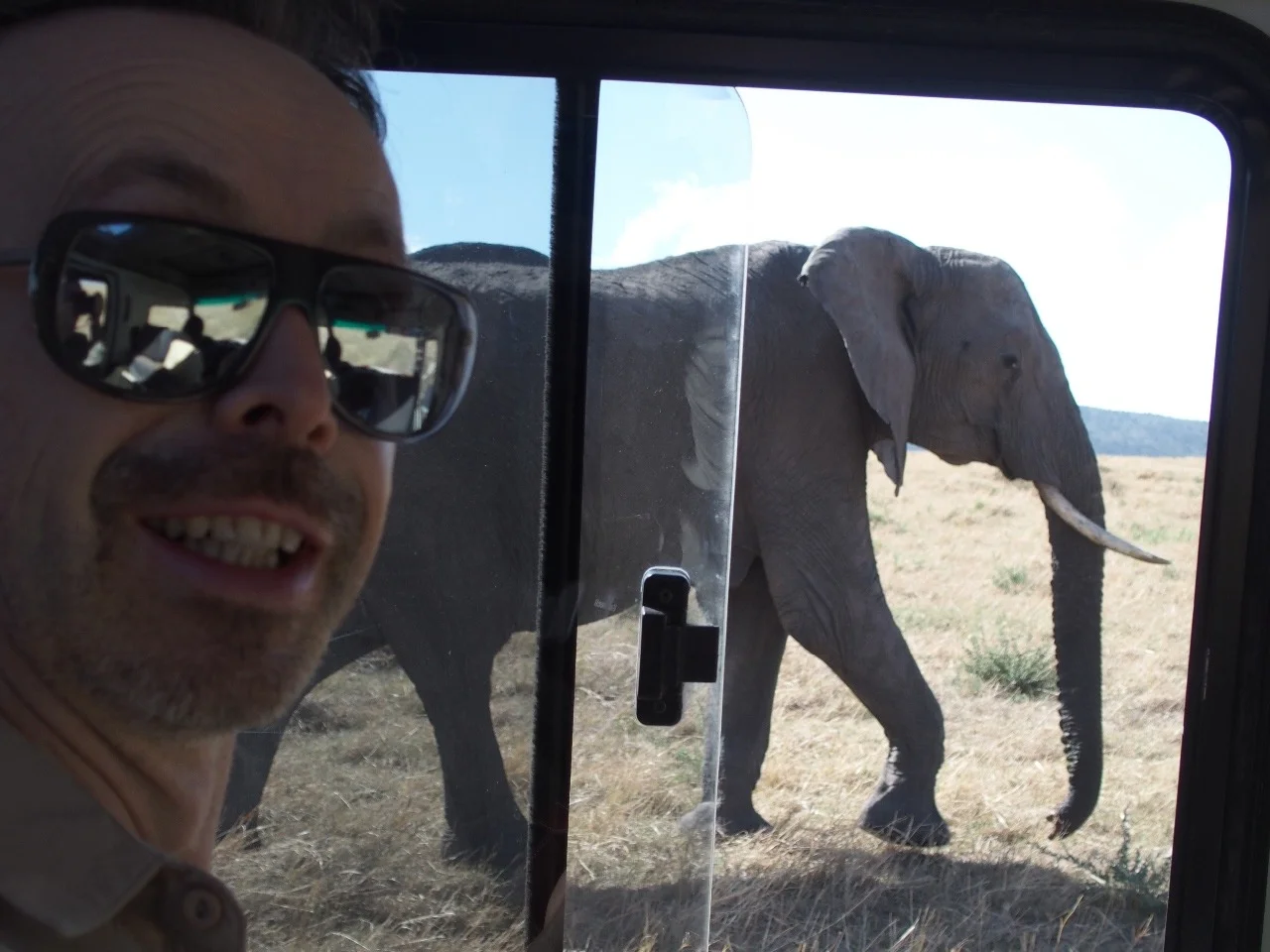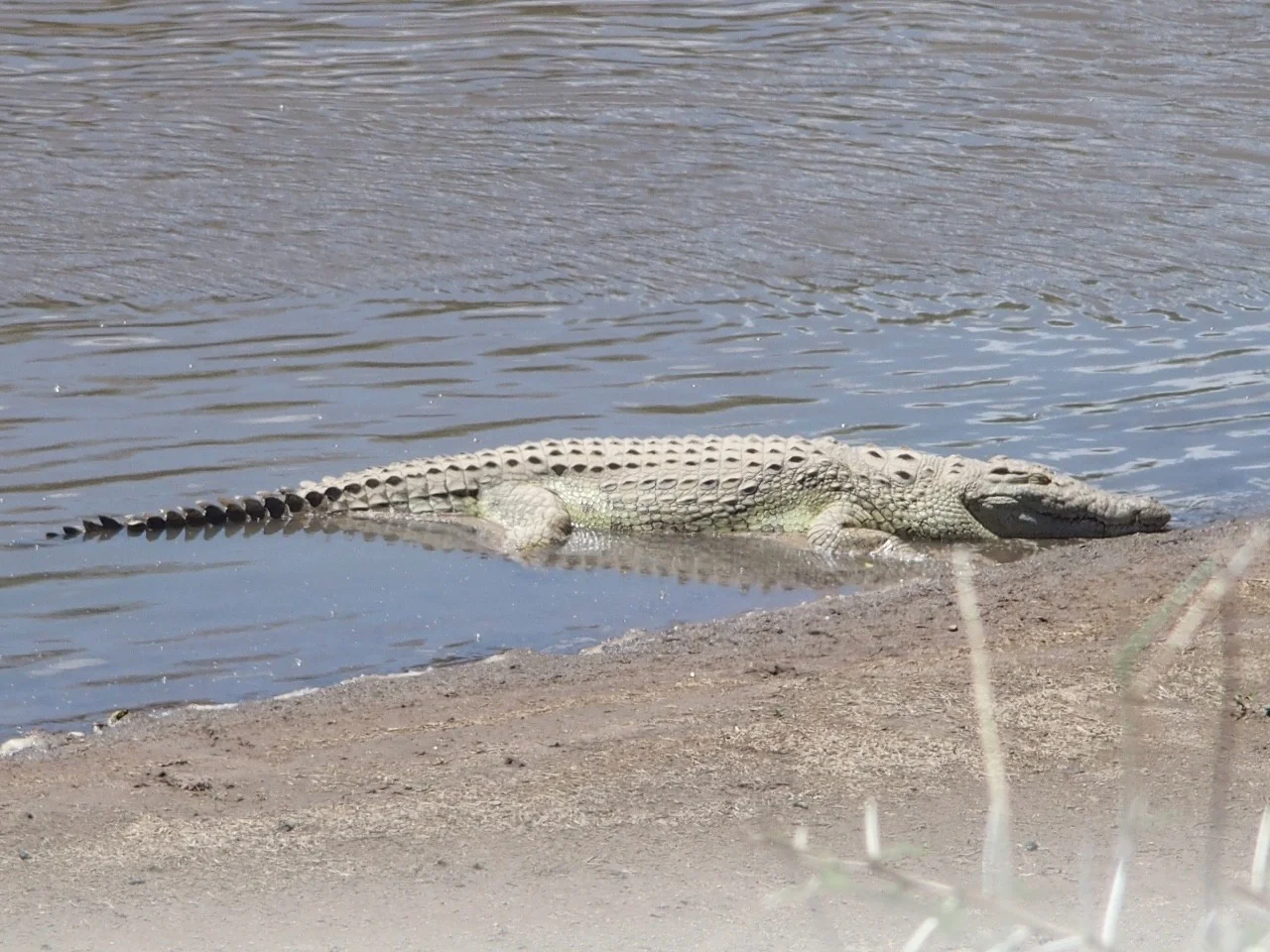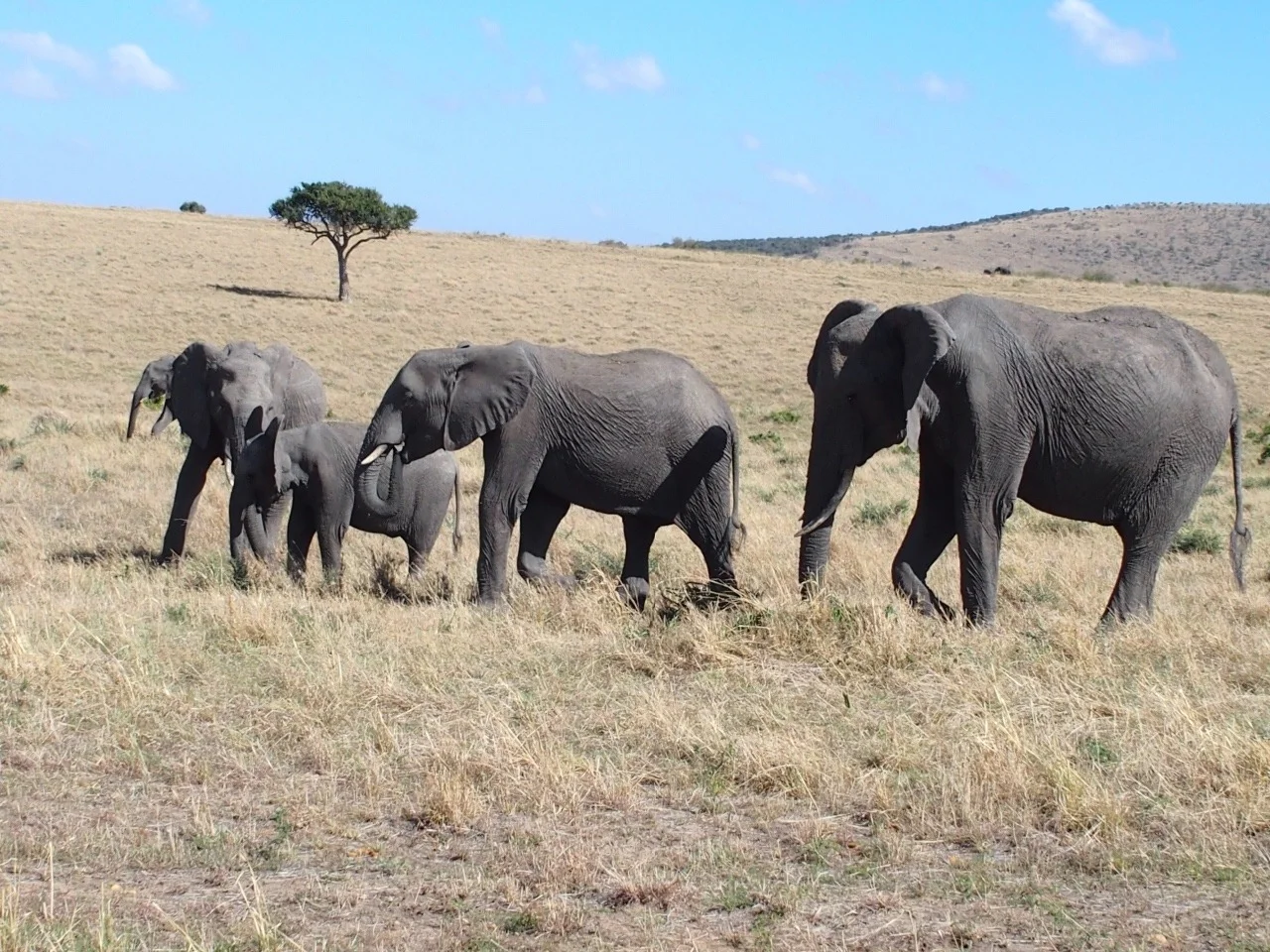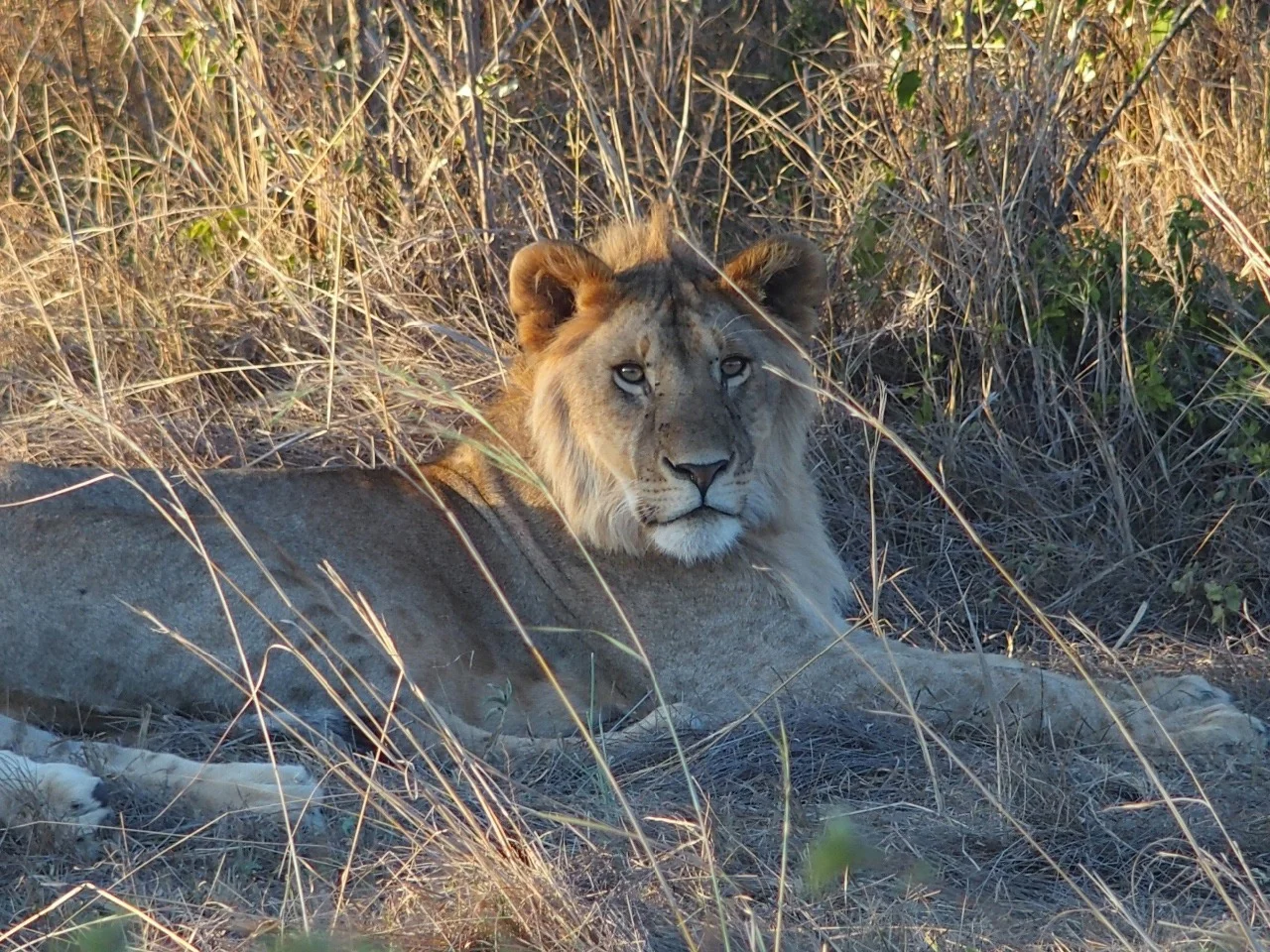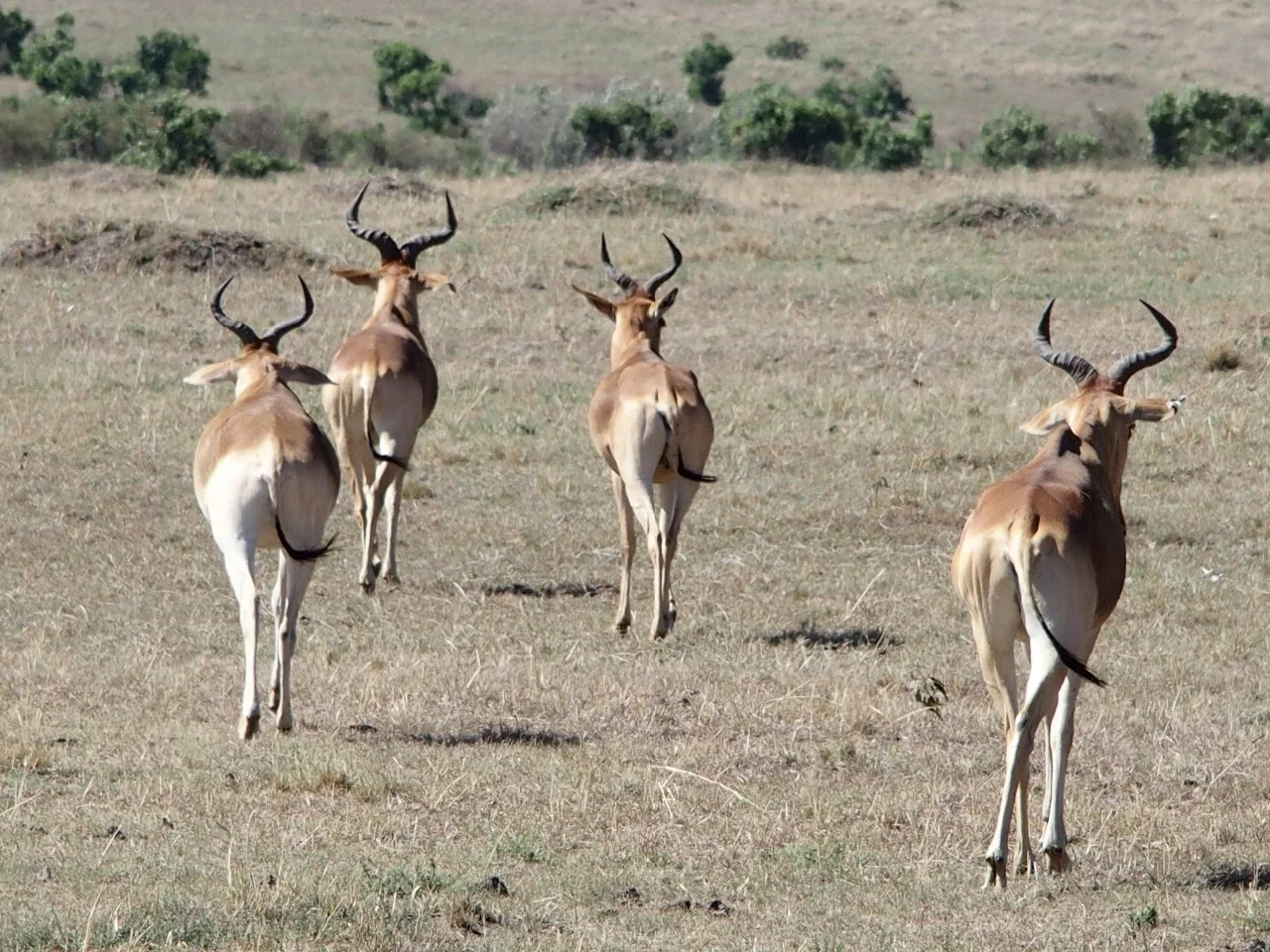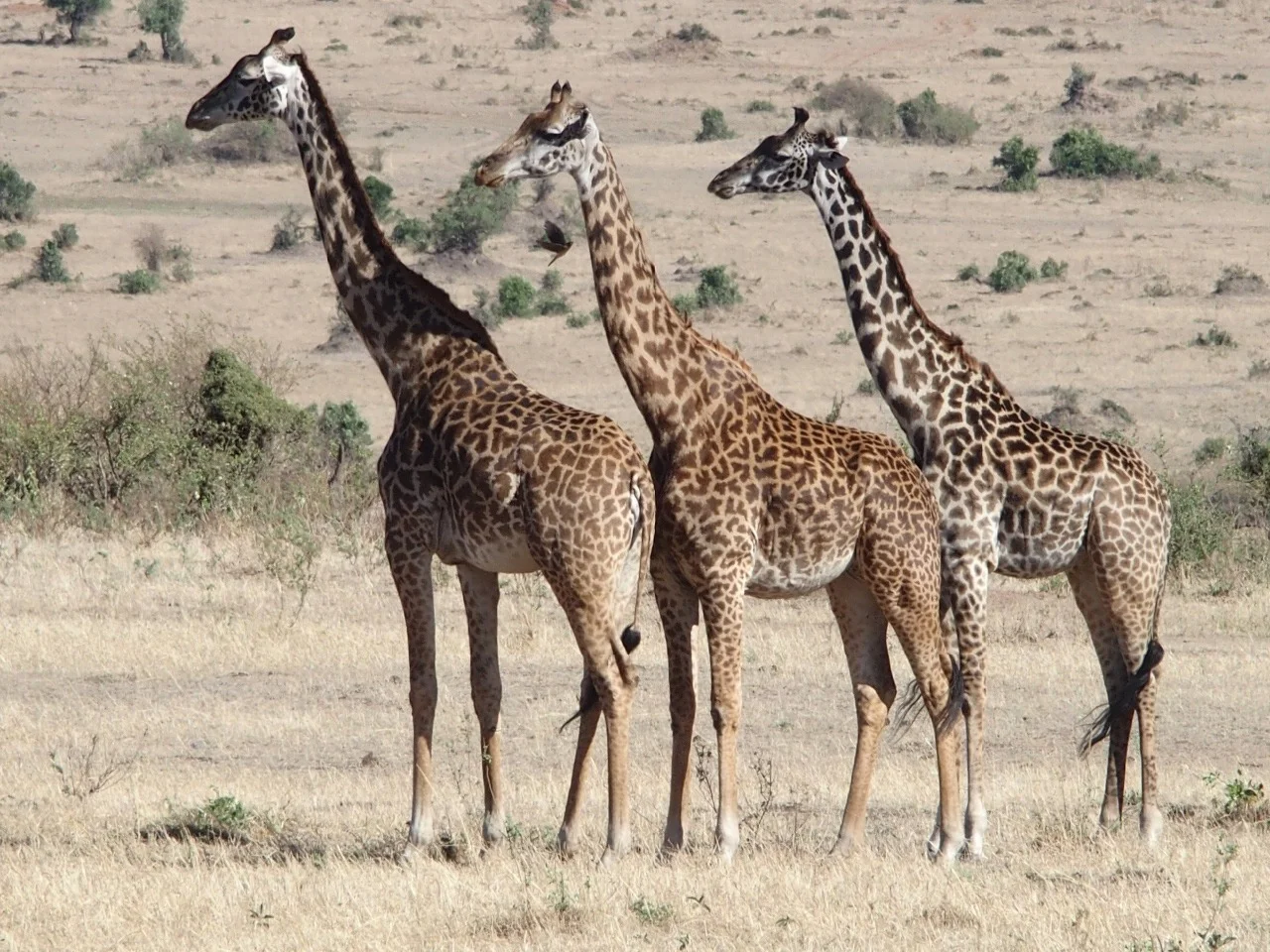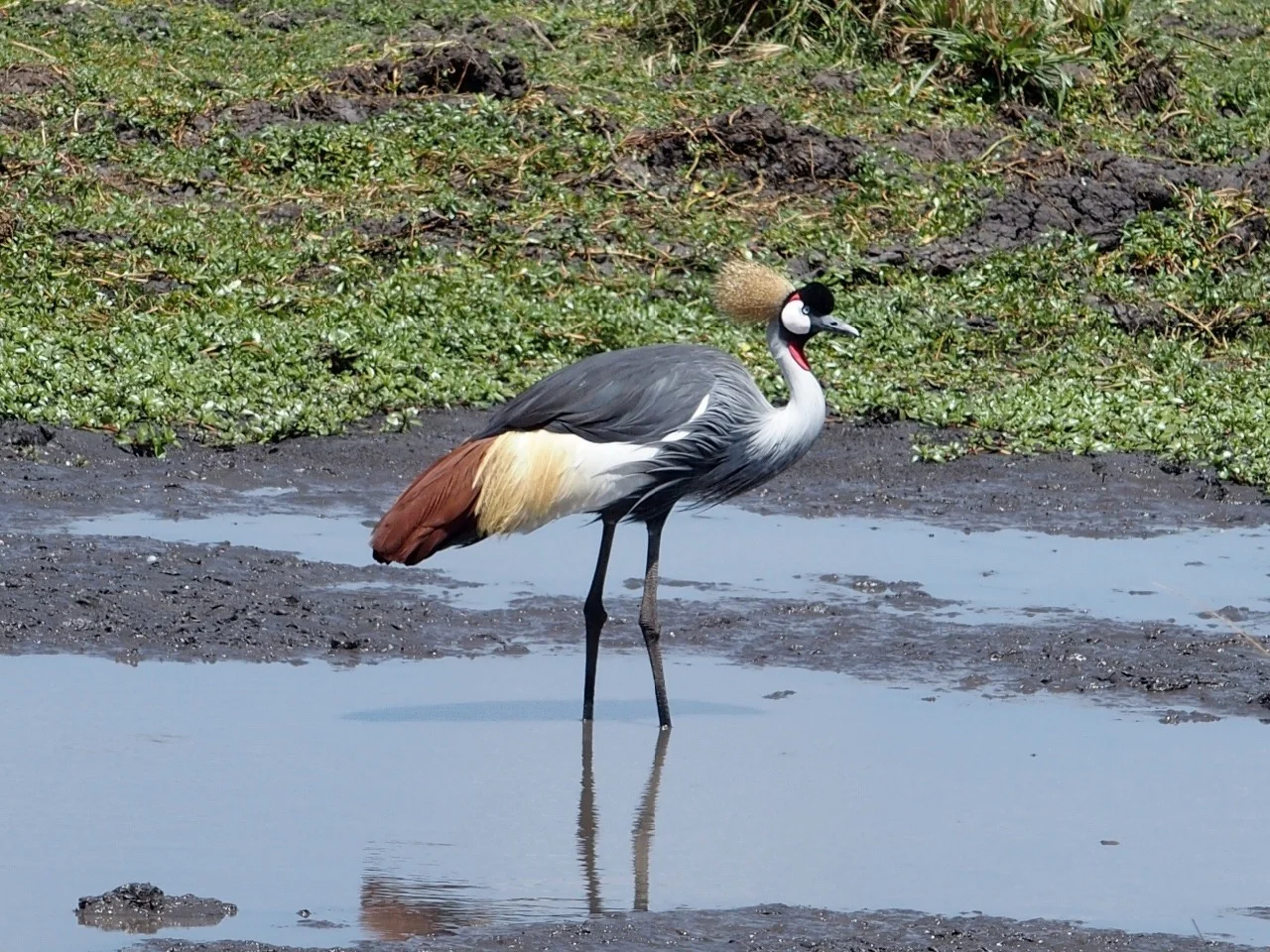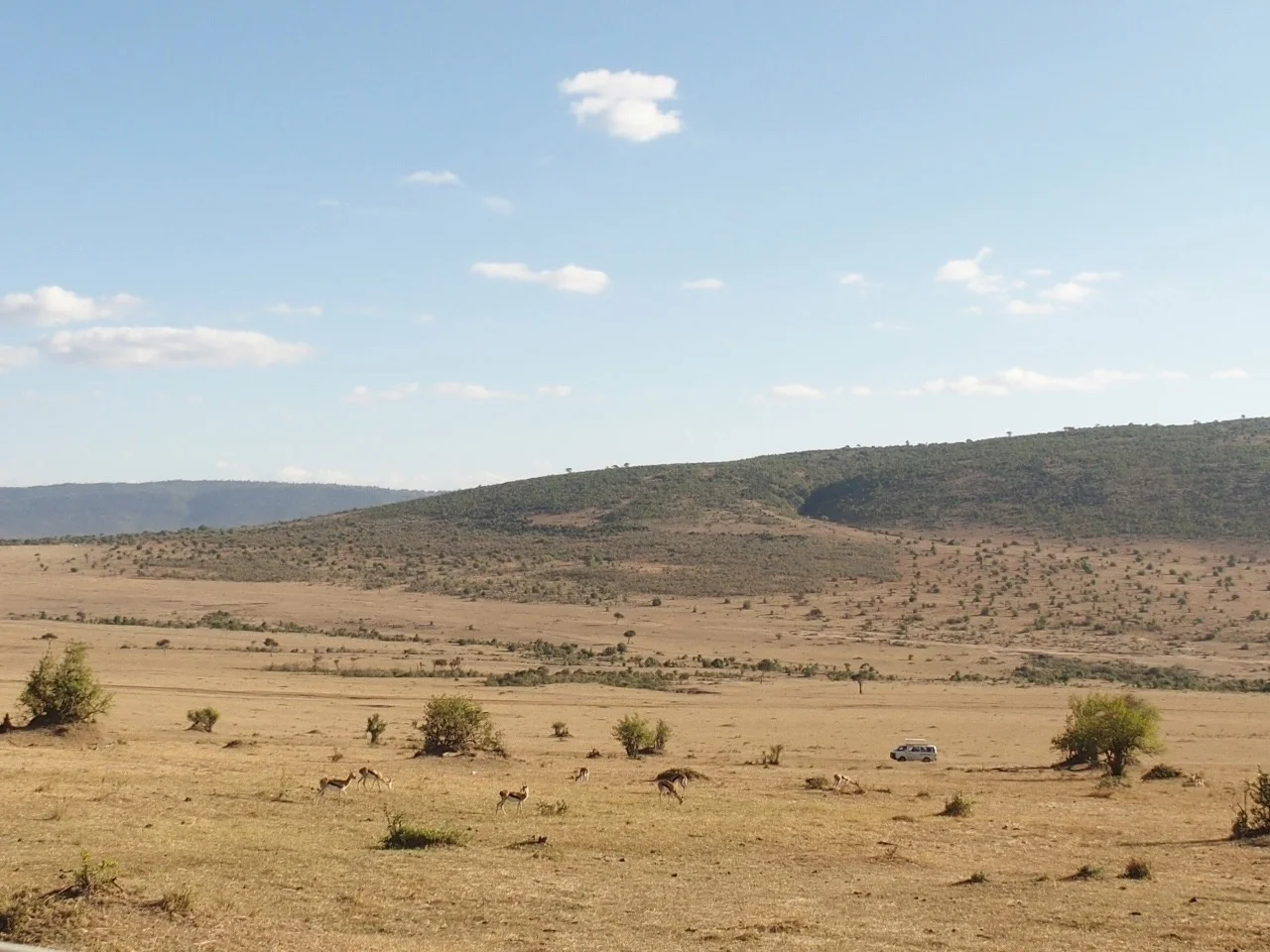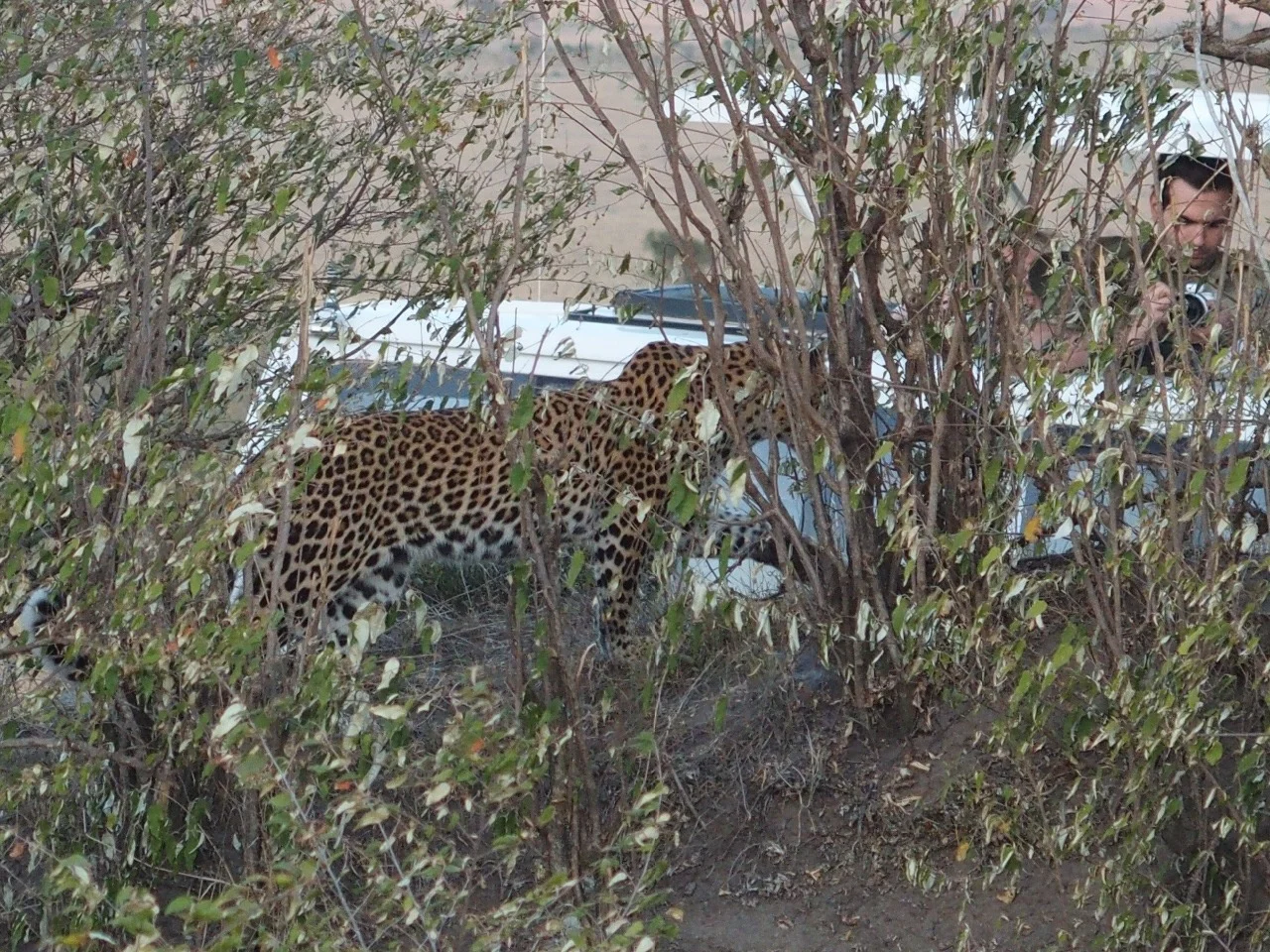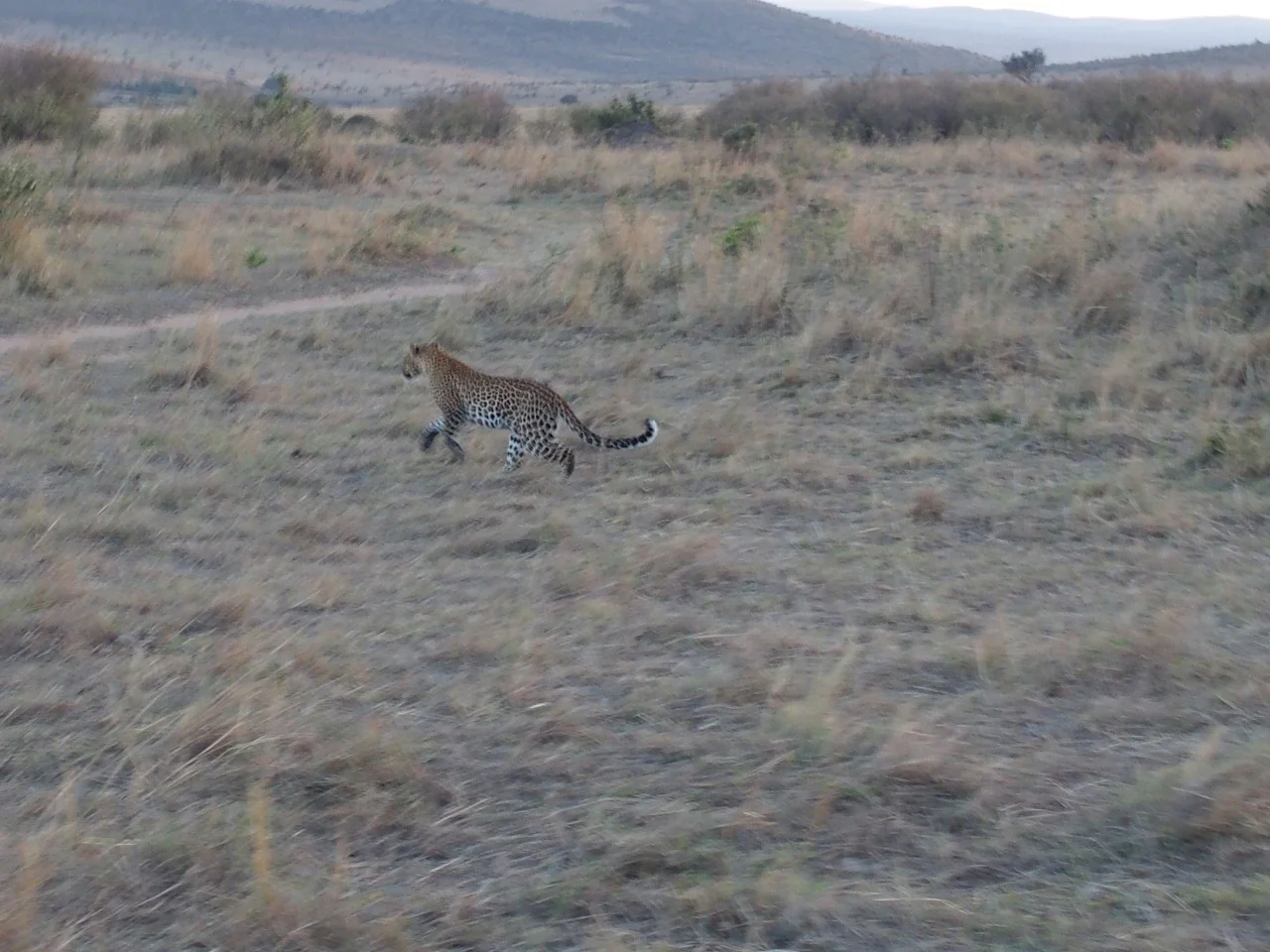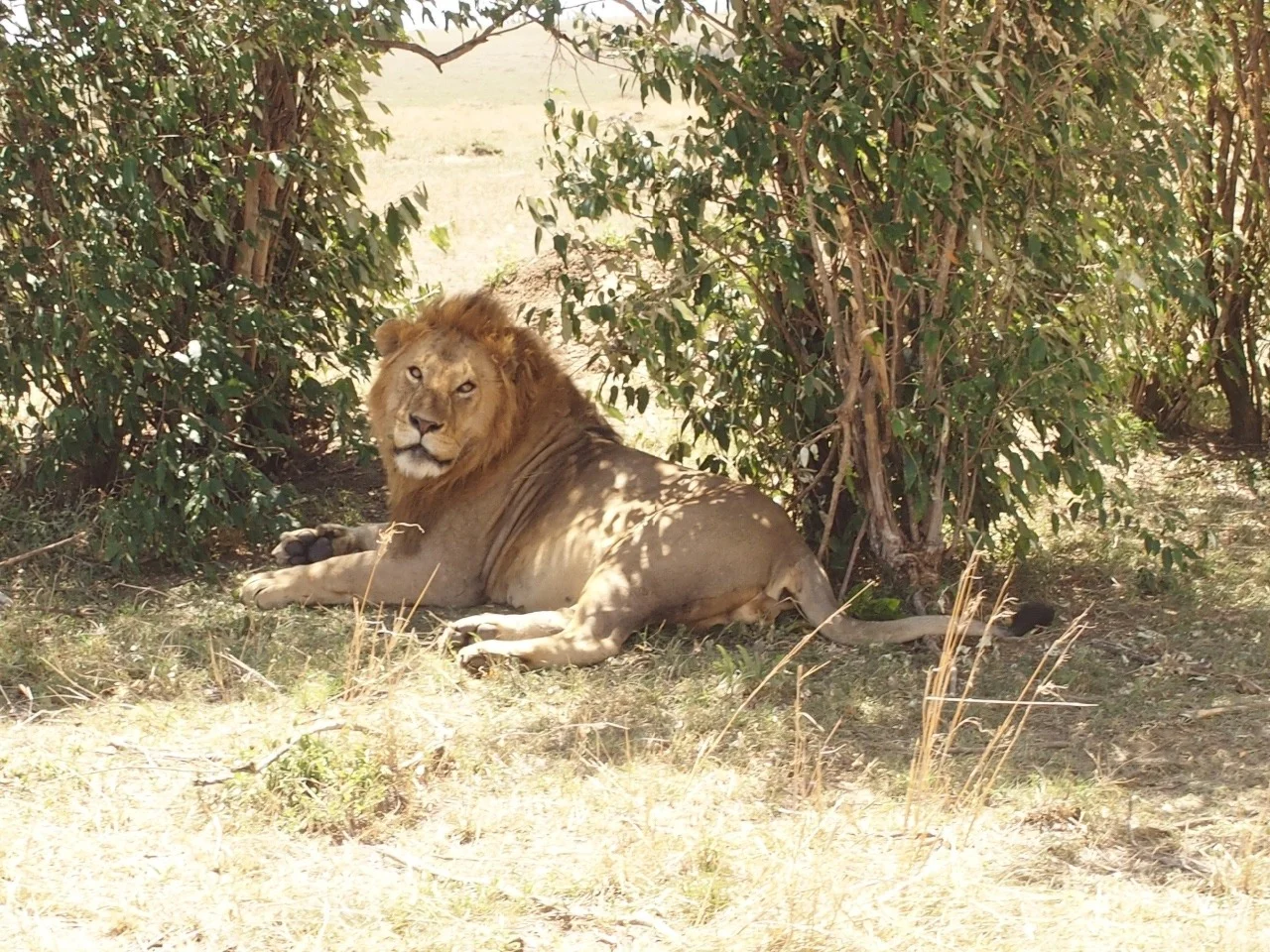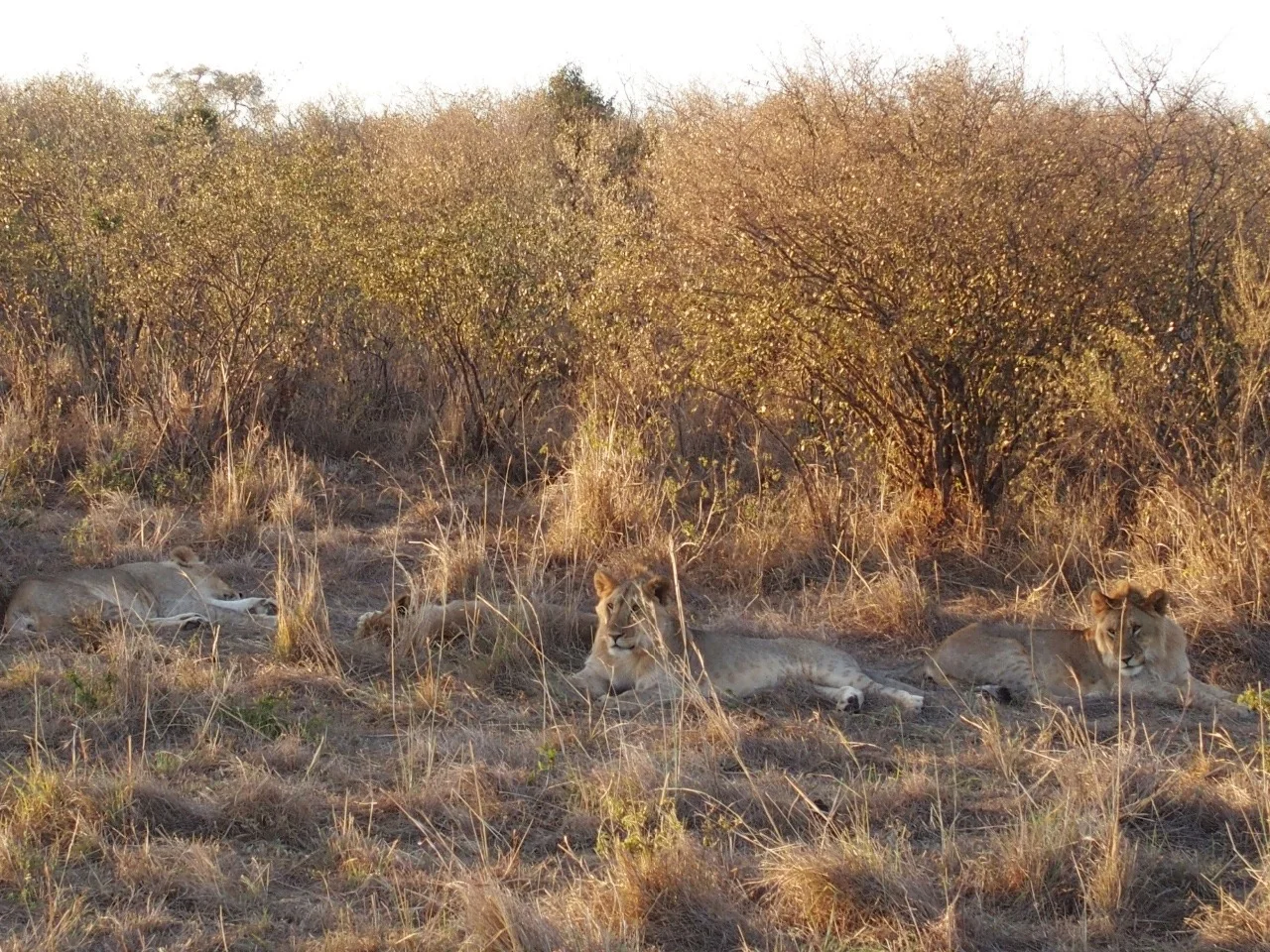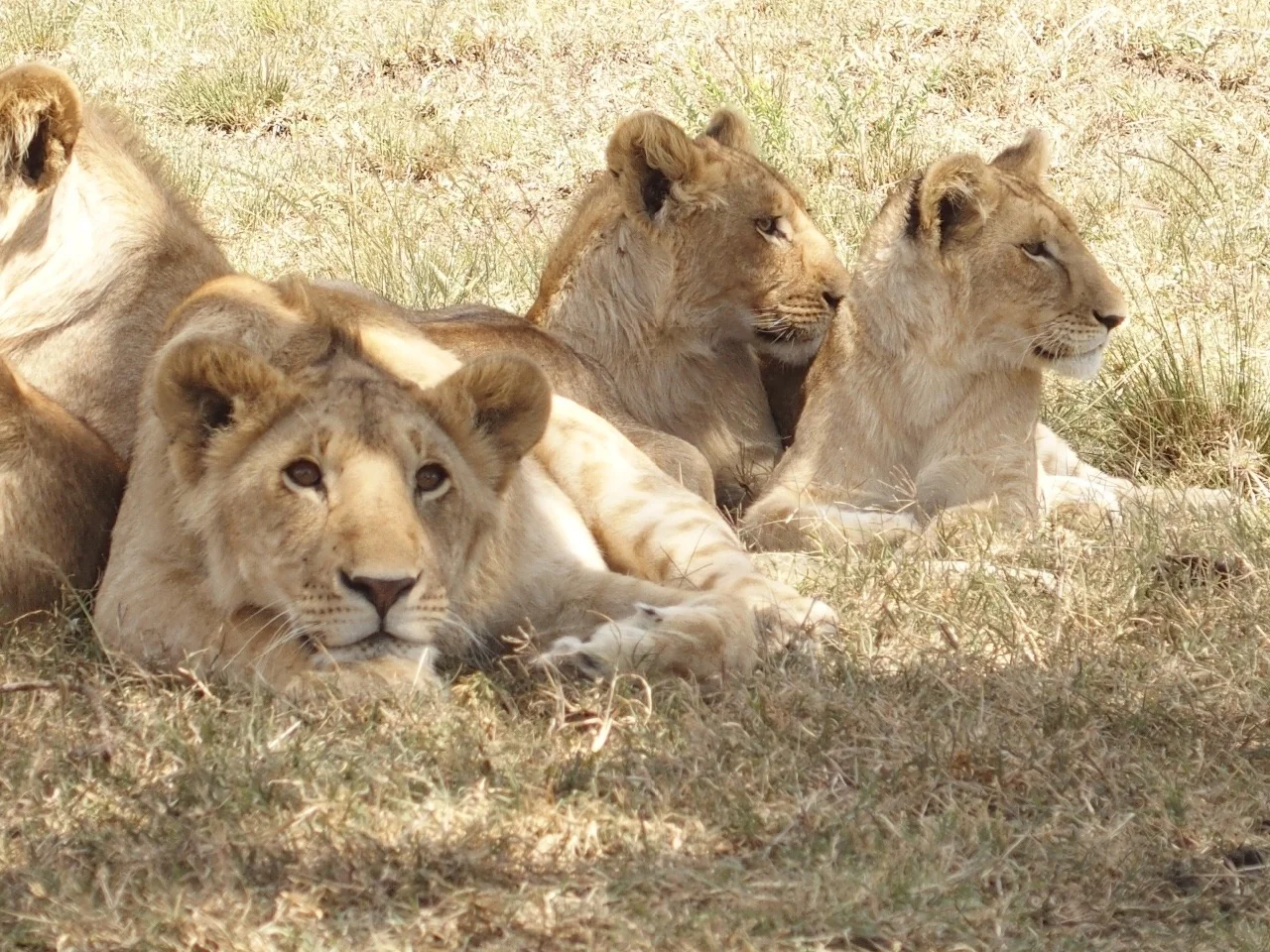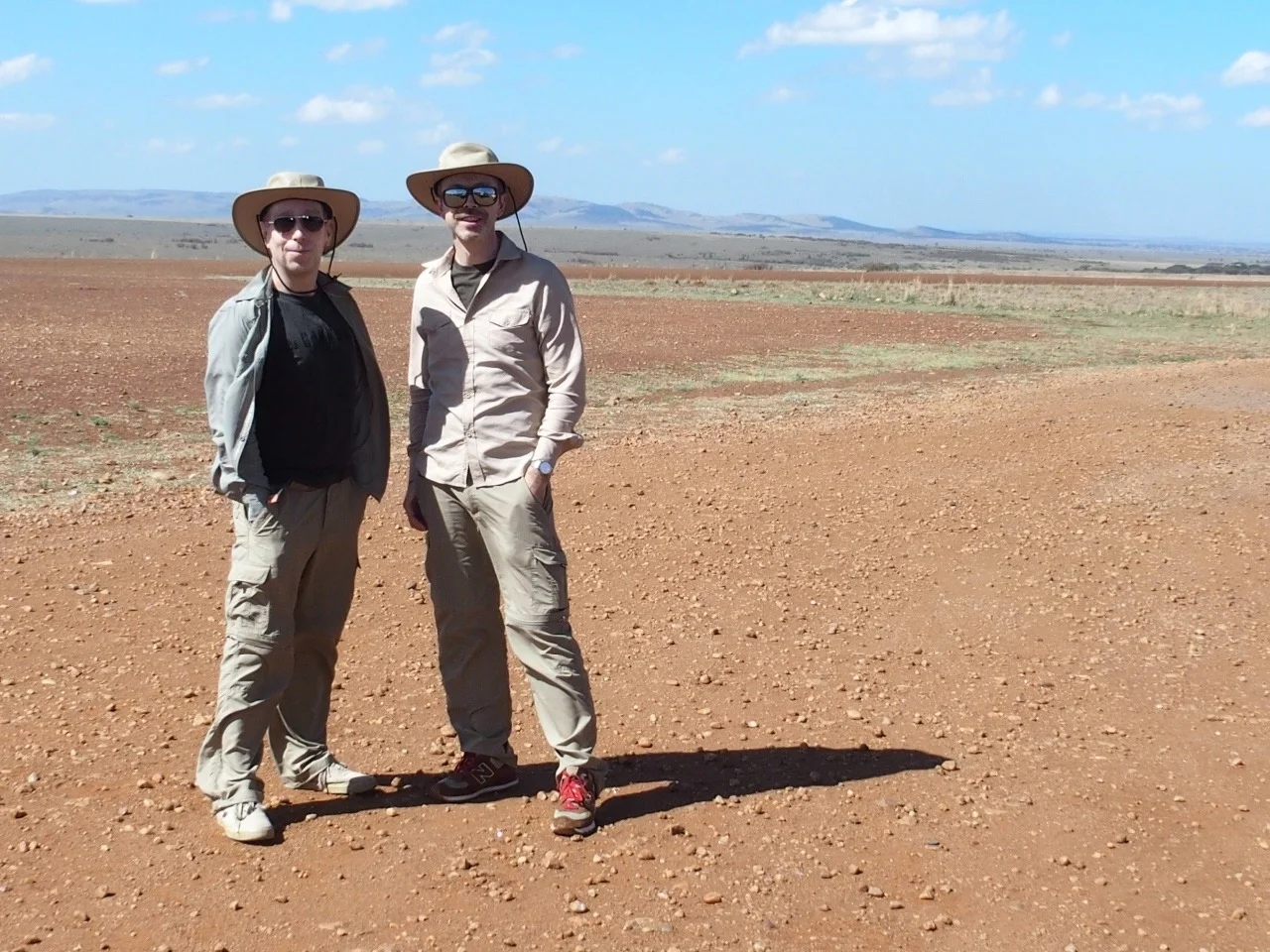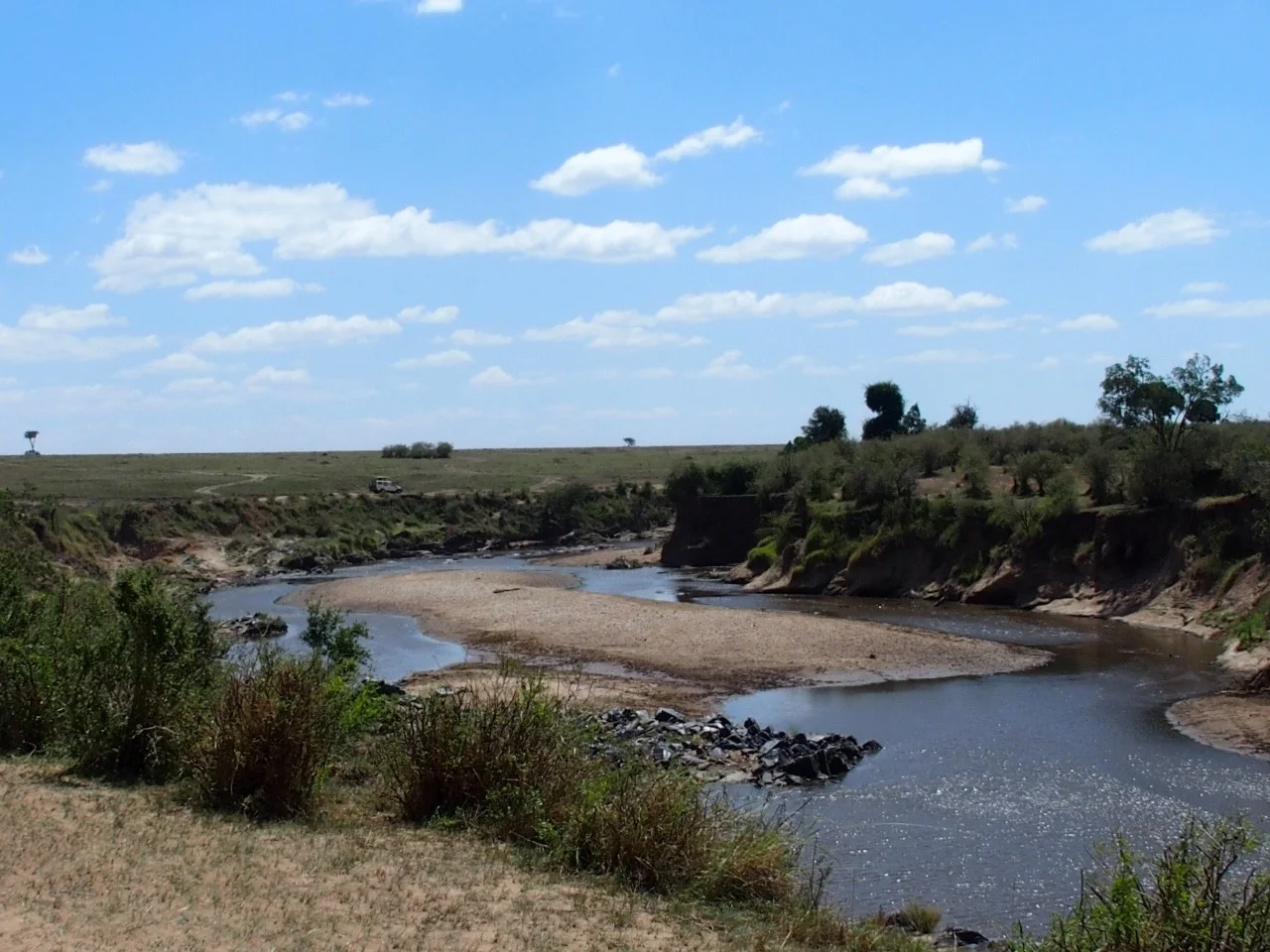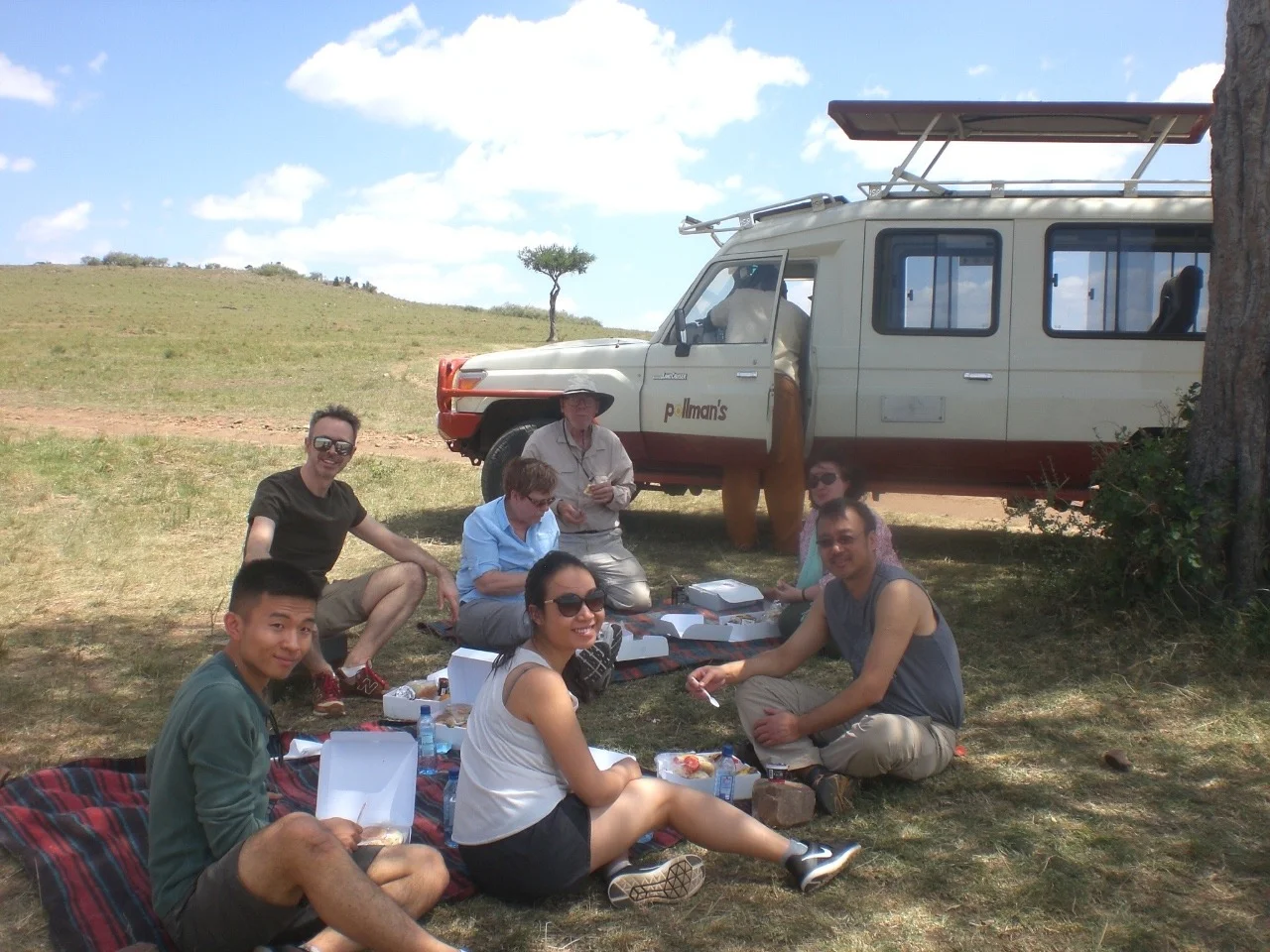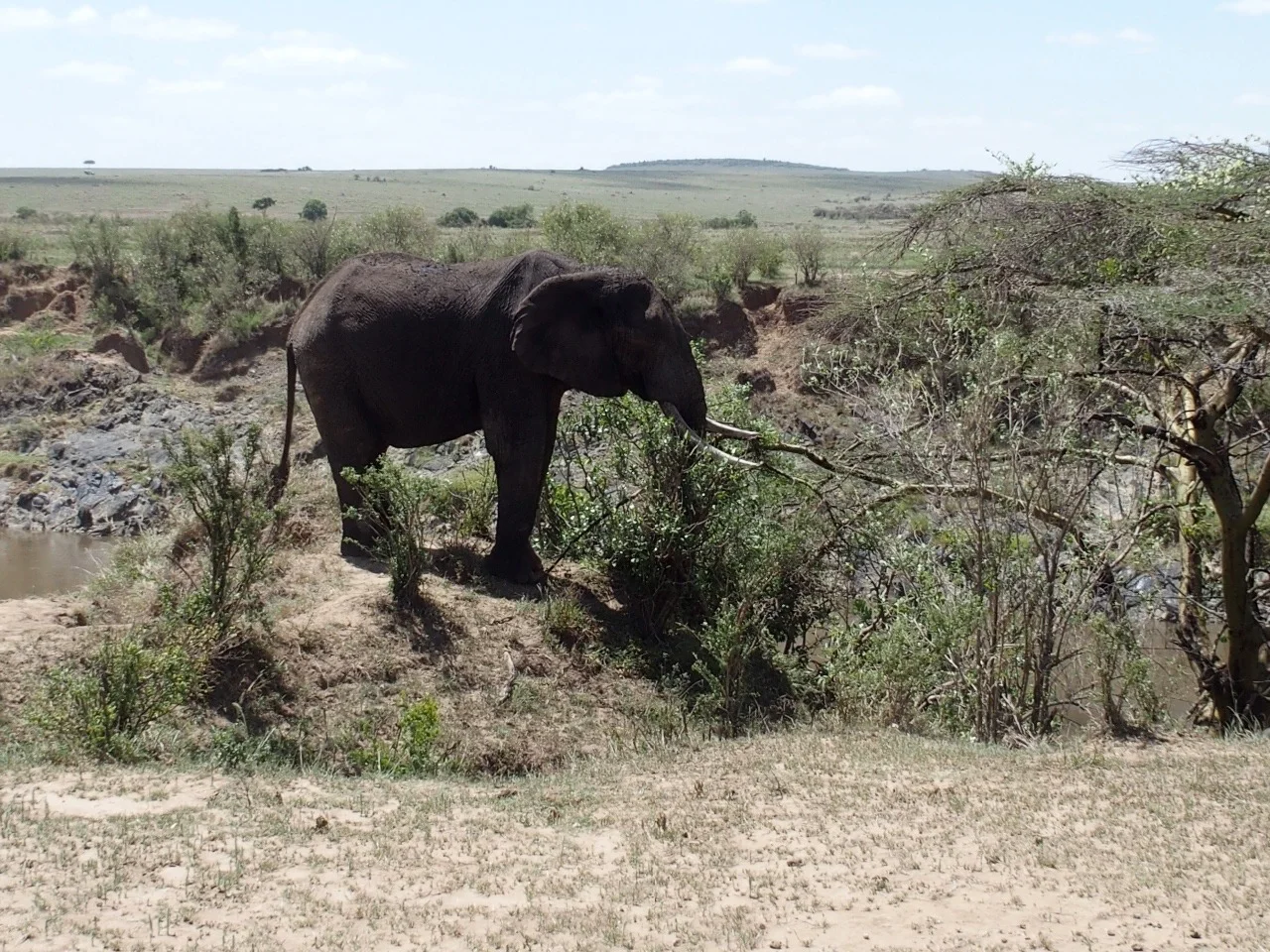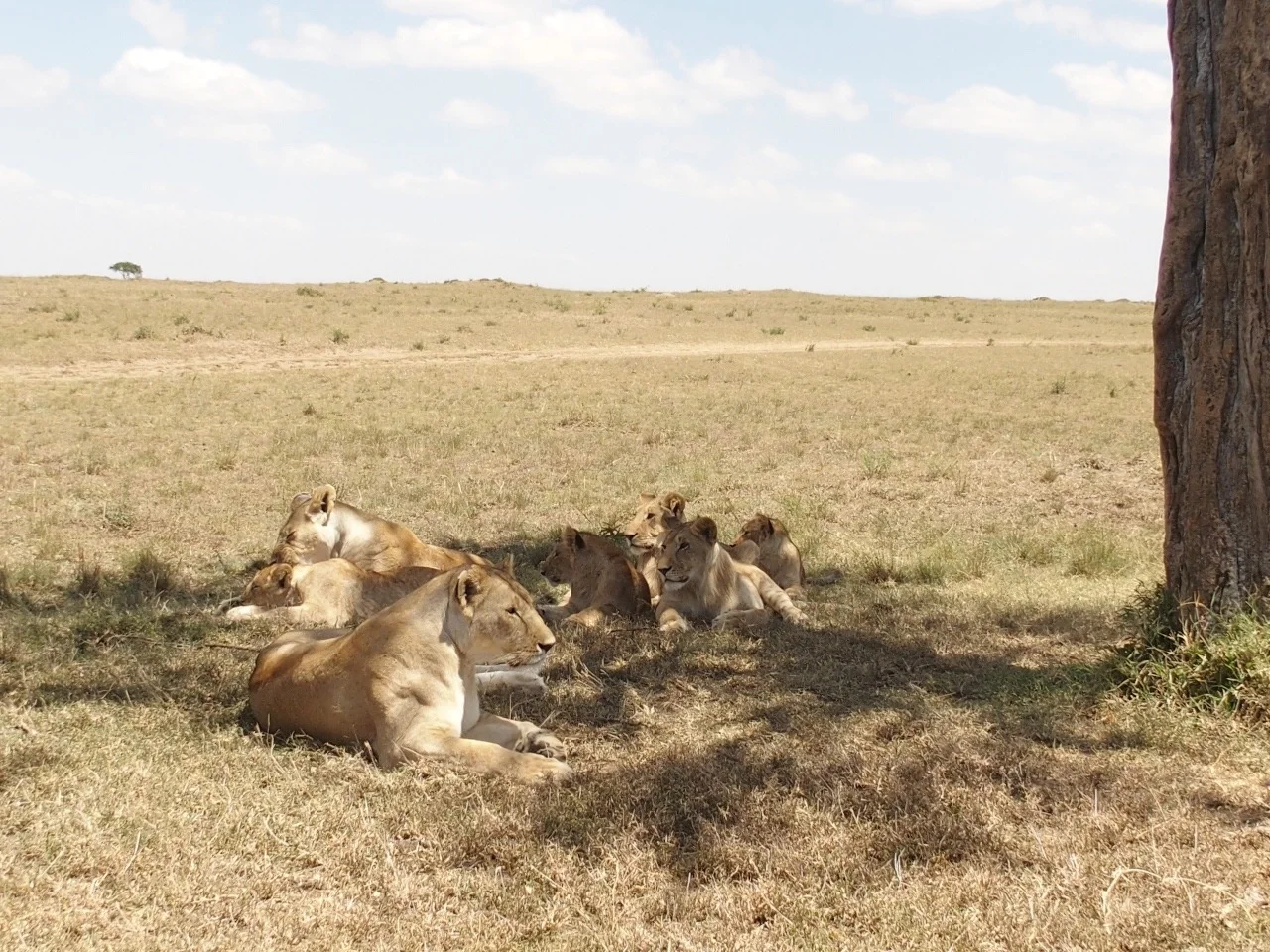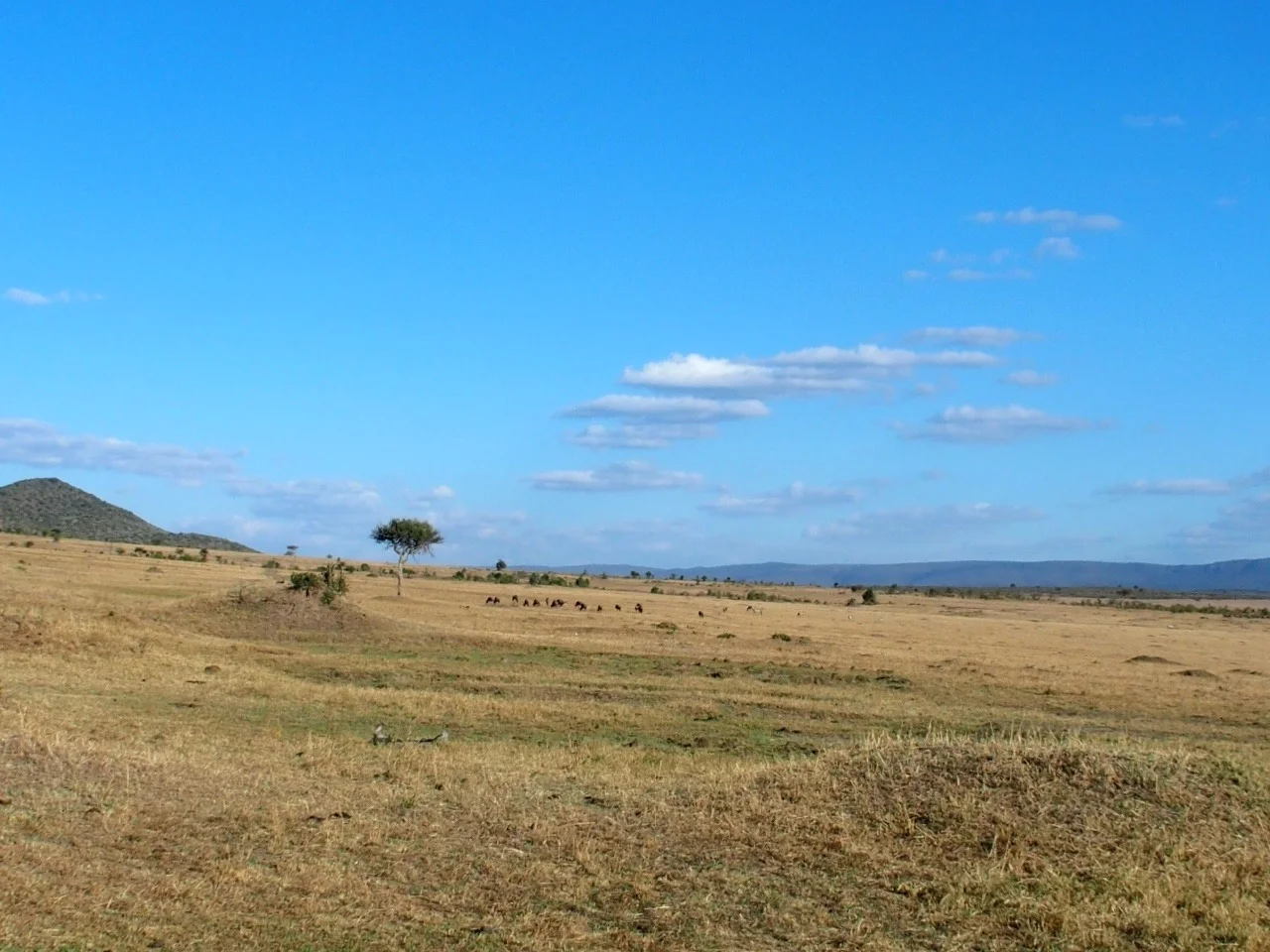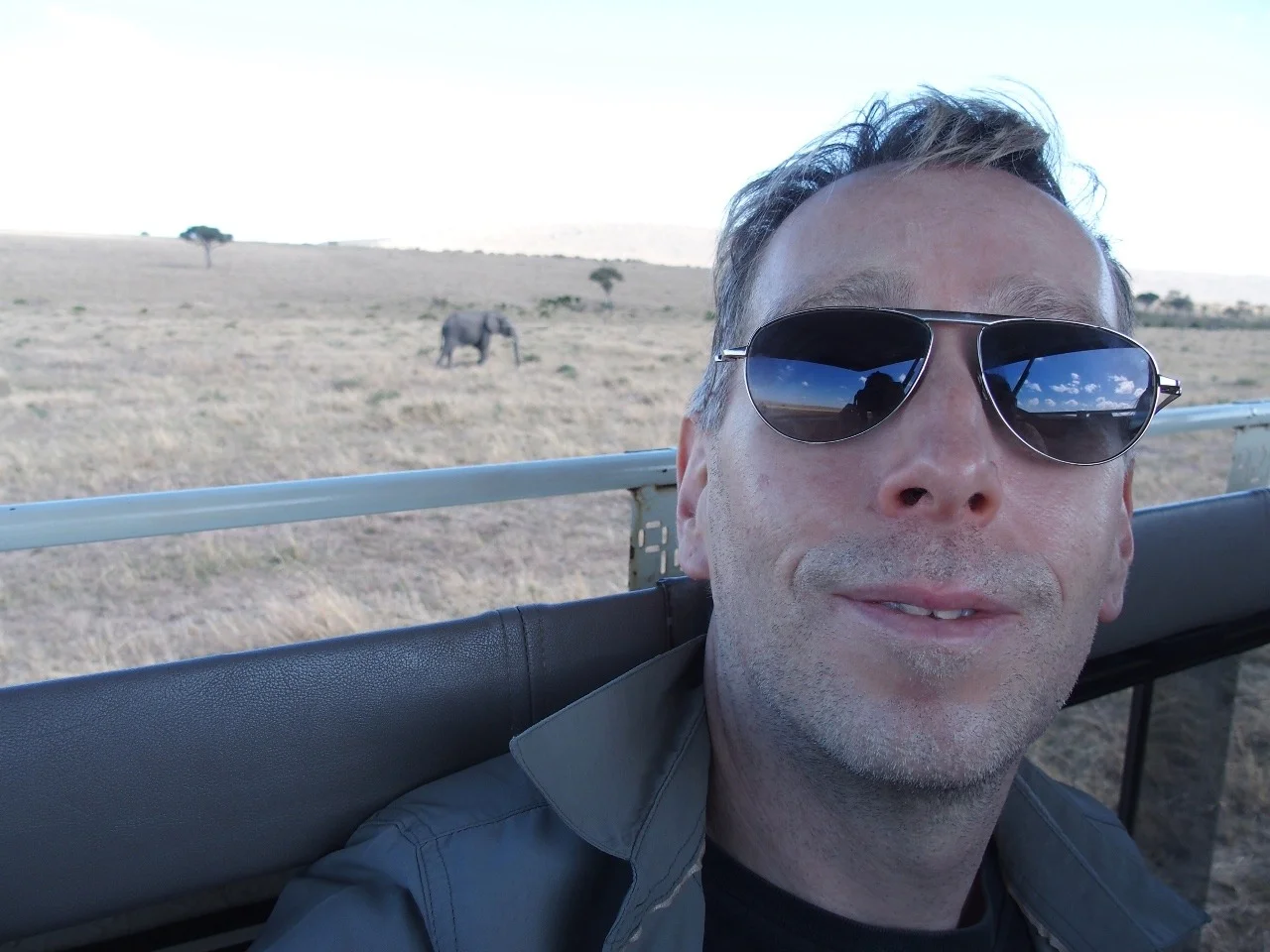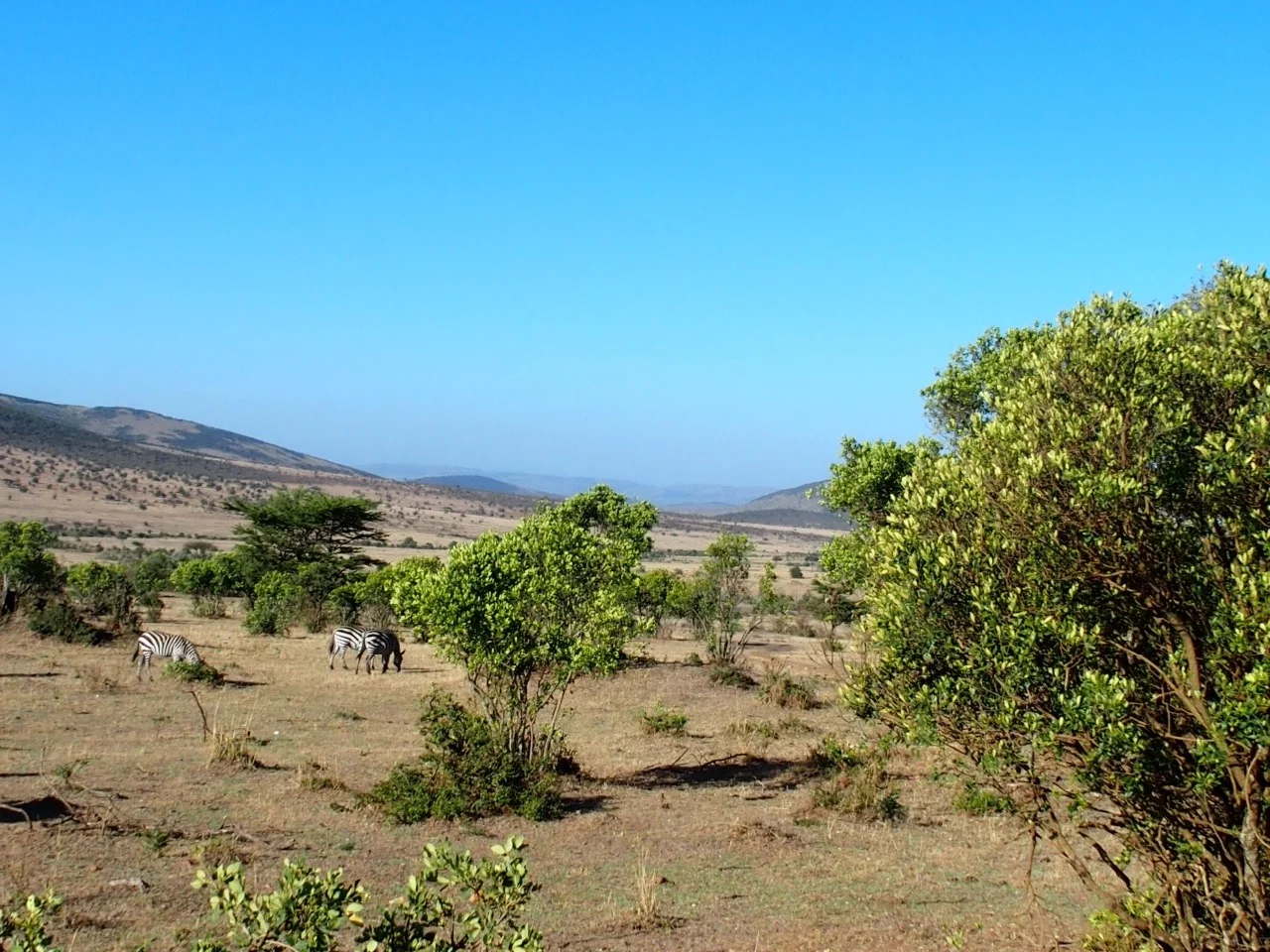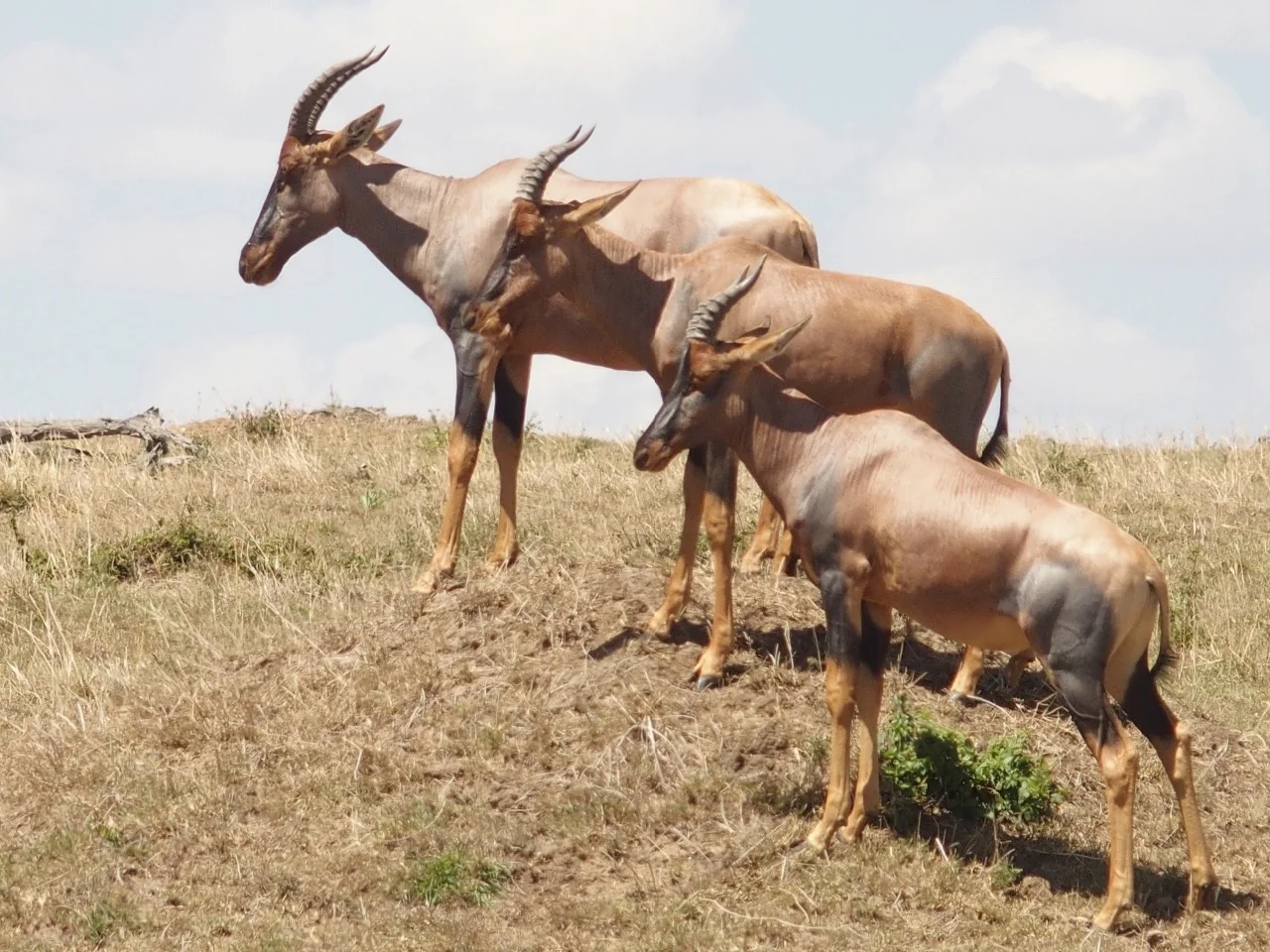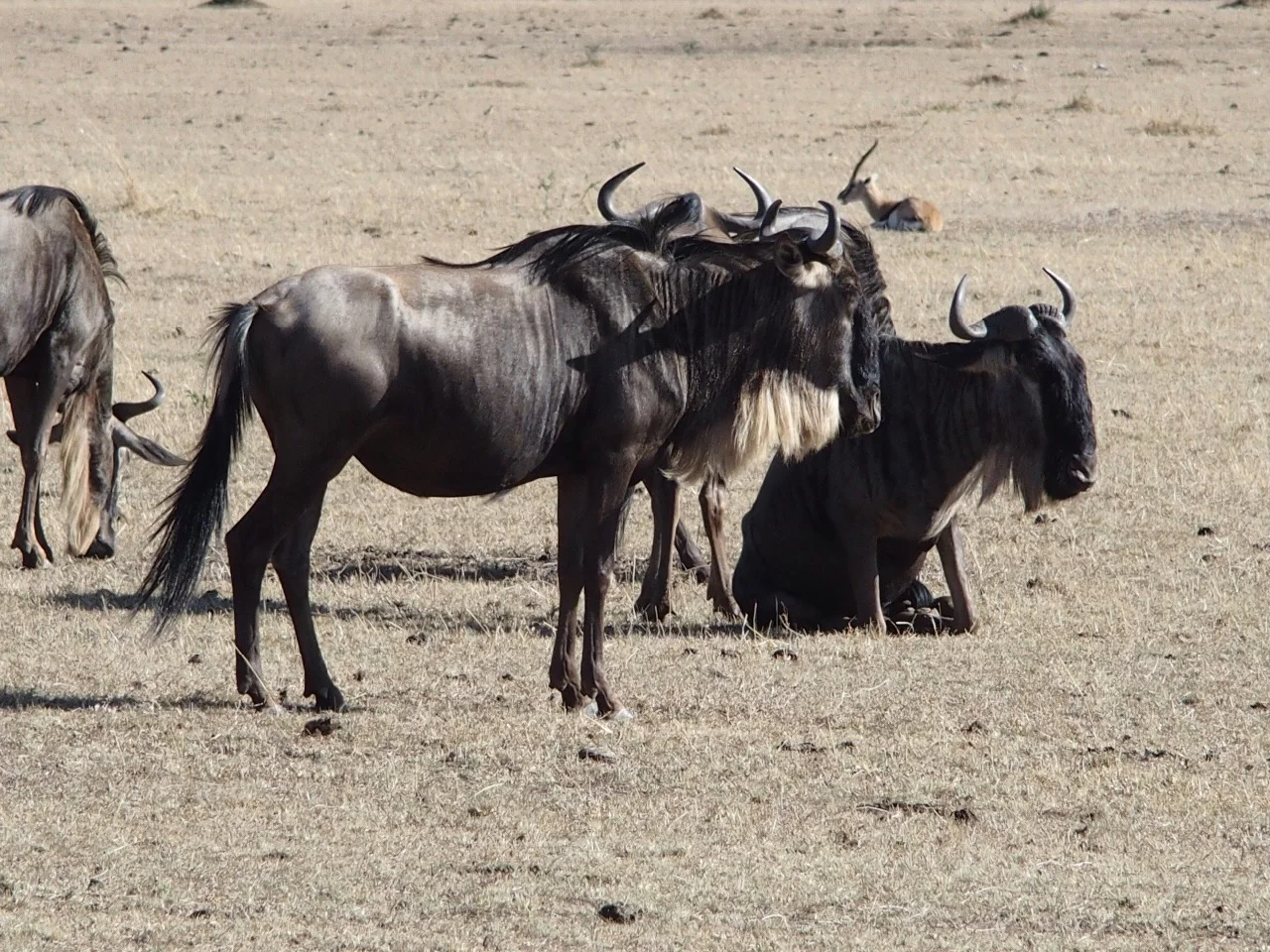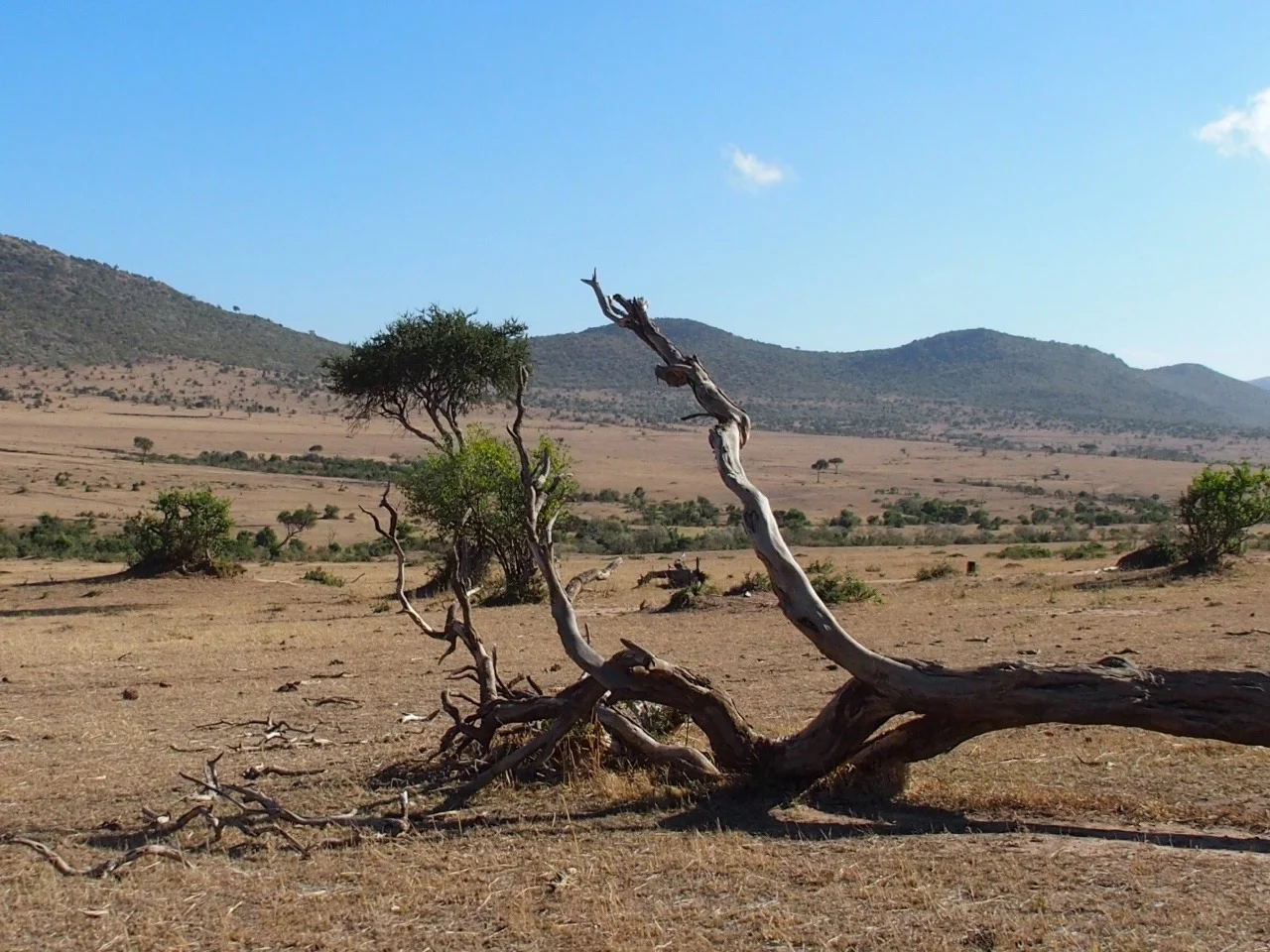Maasai Mara National Reserve, Kenya
So here it is; the Africa of the imagination. We've been waiting months for this - if not our whole lives - so are well prepared, having invested in the full regalia of khaki clothing, wide-brimmed hats, binoculars, a 32G memory card, guidebooks, tropical medications and gallons of factor 50 and insect repellent.
We set off on our first of two safaris into the heart of the Masaai Mara at 4pm on the day of arrival, this afternoon's lasting three hours until sunset and tomorrow's a nine hour epic, punctuated by a picnic lunch under an acacia tree, keeping an eye out for lions as we sit on blankets under the African sky, and gingerly relieve ourselves in the bush.
However, the verdant grasslands of the Mara are parched yellow and clouds of dust accompany us as we travel along, the last rains having fallen over seven months ago. It's the hottest time of the year right now, but the Masaai inform us the seasons have all changed and they are currently suffering drought, desperate for the rains to come and bring life back for their starving animals.
Martin tells us that the drought makes it easier for us to spot the animals as there is less vegetation for them to hide in and they need to be more active to find food... but it's clear the wildlife is in decline as these once-teeming plains are now sparsely populated.
However, the grand aim of the African safari is to spot the Big Five (elephant, lion, buffalo, rhino and leopard) and the Ugly Five (wildebeest, hyaena, vulture, warthog, maribou stork), amongst the varied exotic population, and we are blessed with a number of wonderful sightings over the twelve hours.
We start high, taking a course that brings us up above the plains, as below us plumes of dust follow other jeeps criss-crossing the savannah. The drivers remain in constant communication with each other, radios crackling with news of animals spotted and locations to head for.
The five of us in our vehicle share the excitement as wildebeest, zebra, giraffes, topi and gazelles appear, snapping away as Martin explains the different markings that distinguish the gazelles - Grant, Thompson and Impala - from each other. But he's keen not to spend too long seduced by these more common animals. "We are looking for special things first!" he declares.
Soon the call comes and all the jeeps start speeding to the same location, where two cheetahs lie under a tree seeking shade. Unperturbed by a gallery of tourists they laze around until we get bored and set off in pursuit of new quarry.
As we meander over the plains, strewn with termite mounds, rotting carcasses and bleached bones bear witness to the cycle of nature, occasional vultures stalking the ground. We take in the panoramas stretching before us before the radios burst into excitement again and we start racing overground, dashing down through a steep and rocky riverbed. A leopard has been spotted, the first of our Big Five, and the most elusive beast in the Maasai Mara.
Jeeps are gathering and Martin instructs us to stand and see if we can spot it in the shrubs where it is hiding but in the melee he hits a ditch and we topple sideways almost falling out of the open roof, with my sunglasses flying off my head and my chest banging against the vehicle rim.
We're stuck, but another driver manoeuvres his vehicle behind us and revving his engine manages to push us free. In the commotion the leopard is lost but suddenly I spot him. Martin lurches forward yet none of our cameras can refocus in time and our clear view disappears, as the leopard becomes camouflaged once more. We head off while ten other vehicles circle the copse, all trying to catch a glimpse.
Suddenly the leopard appears ahead of us running for cover and we get our shot. It's a fleeting glimpse but our new-found luck holds as out of the blue we spot a pride of four lionesses basking in the early evening sunshine, their golden colours matching the straw-like grasses and burnished light, magical and lazy, unbothered by our presence.
The next day we discover a family of seven lion cubs and mothers under a huge tree, idly gathered together, whilst elsewhere on the vast plains the jeeps gather to gaze in wonder at a magnificent male lion hiding from the midday sun. He eventually acquiesces to our desires to raise his head, enduring the sound of dozens of cameras clicking away before we all leave him to snooze in peace.
More active is an early morning chase we witness as a pair of cheetahs, hiding under a balanite tree, separate off a wildebeest calf and mother from their herd and give chase, their burst of speed no match for the stamina of the wildebeest who make good their escape.
As we drive around we spot baboons, herds of buffalo, warthogs, ostriches, an eagle, a pair of grey-crested cranes (the national bird of Uganda), jackals and three more types of antelope - the tiny dik dik, the bigger hartebeest and the shy but huge eland antelope, at 900 kilo even mightier than the buffalo.
However it's the African giants we're most keen to see - the under-threat elephants and almost extinct rhino. We're heading to a nearby airstrip to use the rudimentary toilets there when I spot three shapes on the horizon. Binoculars clasped to eyes and our hopes are realised. Elephants!!!
All thoughts of relief are cast aside as we race in their direction and soon we are upon them, a family of 11 glorious elephants led by an enormous matriarch. They eye us up but decide we are no threat, armed as we are with cameras taking selfies as they wander around us, the matriarch coming so close to our jeep we could almost touch her. It's a fantastic experience, full of delight!
As we drive on to the airstrip afterwards Martin tells us that these elephants are safe because the rangers protect them by taking matters into their own hands. "No arrests!" he avers. "They kill poachers. That's the way they keep them away". And as the day progresses we see at least three more families of elephants grazing for food.
Before lunch we drive down to the Mara river, scene for many a wildlife documentary as hundreds of thousands of wildebeest stampede across its raging waters on their migration from the Serengeti. Today however it's very low, affording just enough water for hundreds of hippopotamuses basking on each other and letting out huge *****. Here and there the odd ibis stands motionless on the river bank whilst crocodiles soak up the blazing sun.
It's so hot that as Martin drives us back later from deep in the heart of the Mara to visit the Maasai village and return us to a welcome hot shower to clean off the dust at the Sopa Lodge, we all fall into various states of sleep, the relentless bouncing of the journey almost rocking us to unconsciousness.
The sightings of giraffe and zebra that excited us so much earlier are now passing with barely a blink, our only regret the fact we didn't see a rhino in the Maasai Mara. Yet all is not lost, we are merely at the start of our safari adventure and tomorrow we head to Lake Nakuru, where rhino also roam. Our hunt continues there.
